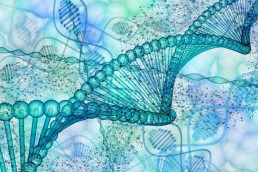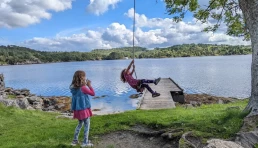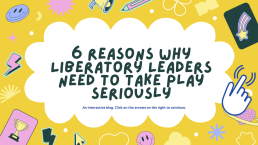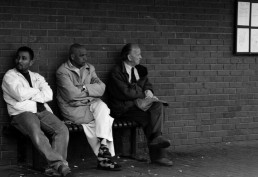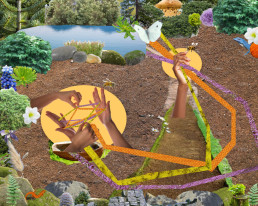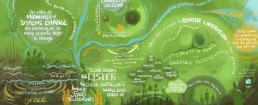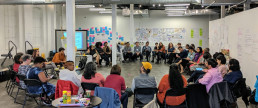The DNA of Organizational Transformation—Structure, Relationships & Shared Purpose
In my role as an organizational well-being officer at IBSS Corporation, I was given a unique opportunity. As part-scientist, part-community builder, and part-alchemist, I was able to bring my personal and felt understanding of well-being and investigate the work environment to see what was missing and create experiments to address the gaps. With great interest and enthusiasm, I explored all facets of employee well-being and built, reverse engineered and validated those conditions and components that were needed for well-being to thrive.
I was excited and curious to learn how an organization would look and function that put the well-being first of its employees, customers, suppliers, community, and even the earth.
- How would people feel going to work? How would that impact customer relationship and loyalty?
- What would that mean to suppliers who work with the organization and would they begin to absorb some of that well-being into how they operate?
- How would the organization be viewed by local and other communities? Would they consider the organization part of the community or just another name on a building they see as they walk by?
During my 3-year tenure, I investigated and experimented constantly. At the end of that window, I finally began to uncover the key fundamentals an organization needs to support the well-being of its employees. Then the pandemic hit. I don’t know if it was all the medical talk about vaccines and DNA or that I just had more alone time than usual to contemplate organizational well-being and transformation, but about six months later I had an aha moment! My insight involved genetics—specifically, the DNA of an organization.
“Double helix” is the biological term for the instantly recognizable structure of DNA. Often visualized as a twisted ladder or spiral staircase, the double helix consists of two strands of DNA wound around one another. Each of these strands holds different information that, when combined, form the language of the genetic code. I applied the double helix analogy to an organization’s structure, starting with the idea that these two DNA strands represent the building blocks for deep change and transformation.
- Structure: I call one strand the structure. This is the backbone of an organization, and it consists of all the operating procedures and workflows that are used to create internal change such as policies, processes, strategies, org charts, IT systems, etc. These are often used as levers to create change in an organization because they are typically measurable, tangible, and easy to see.
- Relationships The second strand, I call relationships This strand encompasses the individual work relationships employees have with the dozens of other employees they regularly interact with and the quality of those relationships.. Unlike structural elements, relationships aren’t something easily seen or measured, but it can be felt. It’s very similar to when a good facilitator can feel the group, or a performer can feel the crowd.
- The double helix’s twisted DNA strands are connected in the center by hydrogen bonding. This was the critical piece I soon realized was missing. The golden thread binding structure and relationships together is shared purpose. From an organizational standpoint, this third component may be the most important.
Aristotle famously said: “…the totality is not, as it were, a mere heap, but the whole is something besides the parts…” When the raw materials of structure, relationships, and shared purpose bond together they transmute into something very different, something far greater. This new harmonious state or way of functioning is experienced as emergence or flow. To achieve effective organizational change, all three of these fundamental building blocks must be present and working together.
I call this powerful trio of structure, relationships, and shared purpose the DNA of Transformation. It provides the unique genetic code that each group or organization needs to become a place of well-being, connection, care, compassion, empathy, and love while fulfilling its purpose. In my experience, this model can affect change on all levels—with people, teams, organizations, and systems. When organizations change at a DNA level the transformation becomes so deep that going back to the old ways of operating is just not possible. It’s like a butterfly trying to get back into its cocoon to become a caterpillar again—it just doesn’t happen! Does your organization know the right keys to nurture successful change and unlock well-being?

Derick Carter is a heart-centered facilitator, trainer, coach, and leadership consultant who guides organizations, communities, and emerging leaders to create social and organizational change, enhance well-being, and build togetherness. Having worked as a well-being officer for an award-winning government contractor, Derick is passionate about empowering organizational transformation, health, and wellness through his DNA Change Model, which binds structure and relationships with shared purpose. Derick also works at the forefront of heart-centered leadership development and is committed to collaboration and growing organic action from collective wisdom. With over 25 years of experience, Derick’s broad client base includes Fortune 500 companies to mid-size and small businesses, government agencies, non-profits, social enterprises and communities, and public works organizations. Additionally, Derick is a certified Feldenkrais Awareness Through Movement instructor, Functional Integration practitioner, and Heart-Centered Meditation guide.
www.buildwithderick.com / email: derick@buildwithderick.com
featured image found here

Network Weaver is dedicated to offering free content to all – in support of equity, justice and transformation for all.
We appreciate your support!
The Dots From Your Heart And Hand: Breathing Through Art
Like the fast-moving cars in cities, the fast-thinking minds of children throw smiles to my lips.
Building cars are complex – it takes a lot of creativity and expertise. On the flip side, kids crush complexities and build simple car toys that move – yet it takes their creative hands and expert minds to create.
So, what does it take to create the space for anyone anywhere to have the freedom to sparkle through their skills, gifts, stories and talents? Curiosity! The desire to see, think, hug, dance and work differently.
In the last 10 years, thinking about my network weaving journey – from dining with grassroots communities in African countries to virtually shaking hands with changemakers from 5 other continents of the world – one thing stands out: Humans are dynamic, gifts are uncountable, stories are limitless and creativity is endless.
I have seen the bright giggle, the reflective laughter, the inspiring aroma and spontaneous creations that people make in seconds, minutes and hours through their skills, stories and connecting with others.
Is that possible in an online space? You bet. Every word weaves into sentences, every silence makes sounds meaningful, every hello creates new possibilities.
Here’s an example. Sometime in April 2023 I facilitated a session about transformation with June Holley and Brendon Johnson, where we had over 30 people, mostly meeting each other for the first time, come together to use the zoom whiteboard to bring back their childhood painting power.
Everyone had just come back from a breakout room where they shared their personal or professional stories of transformation with 2 or 3 other people.
I gave an easy question: “what does transformation mean to you?” and turned on some gentle background music.
Participant could only reply by drawing, painting, colouring, building or breaking. Here’s the result, after 5 mins:

How did they do this in 5 minutes, turning an empty, plain canvas on Zoom to an amazing painting that reflects how we feel about transformation? I caught some words there: ‘Joy, spaciousness, courage, trust, new, aliveness’
It was a messy and intriguing experience that left everyone feeling inspired.
The whiteboard canvas became a piece of art – coming from the dots in people’s hearts, that ran to their hands and it popped as a beautiful design. Art accommodates all of us, despite being from different disciplines, communities, and networks.
This creation led us into many other conversations -- building relationships, exploring systems change, social innovation, complexity, indigenous practices, exchanging ideas, and learning from one another.
Read some of the reflection of participants:
Lucy Draper-Clarke: “It looks to me like the real, the humanizing qualities like joy, there was commitment, the heart and beauty, using those as the energy for transformation. So rather than focusing so much on what needs to be transformed where the problems are, it's like channeling the best of human qualities. into the process. So that's what came up for me through the stories and through all the hearts on the screen.”
Andy Stoll: “Well, it's messy. I think that's when you think about transformation. It's not a linear, easy one, two, three, four. Lots of different hands create a very emergent property of. No one had a plan for our picture, but here we are.
In communities, families, networks and life, there are several dots, in different forms, shapes, sizes, colors, contexts, carrying different potentials.
There are many tiny dots of sand supporting the ocean floor. The gentle kiss of the sand is part of the fun at the beach, in that same way, the small talk to build trust may lead to building a network edifice.
Everyone in a network has a need and we bring the gifts of our heart and hands to paint each other’s life with meaning.
For example, there are several dots of scrap metal that make a gigantic car. Beyond the money that engineers make, they put their hearts and hands to creating magic that helps us travel millions of miles.
Just as important, the dot of a smile can inspire a hopeless heart and that smile can cause a catalytic and daring embrace to a weak soul.
It was a dot – a curious step you took – to read this blog, but it may just lead to truckloads of ideas and opportunities.
There are multiple dots of virtues lined up limitlessly in your genes – what will you turn them into?
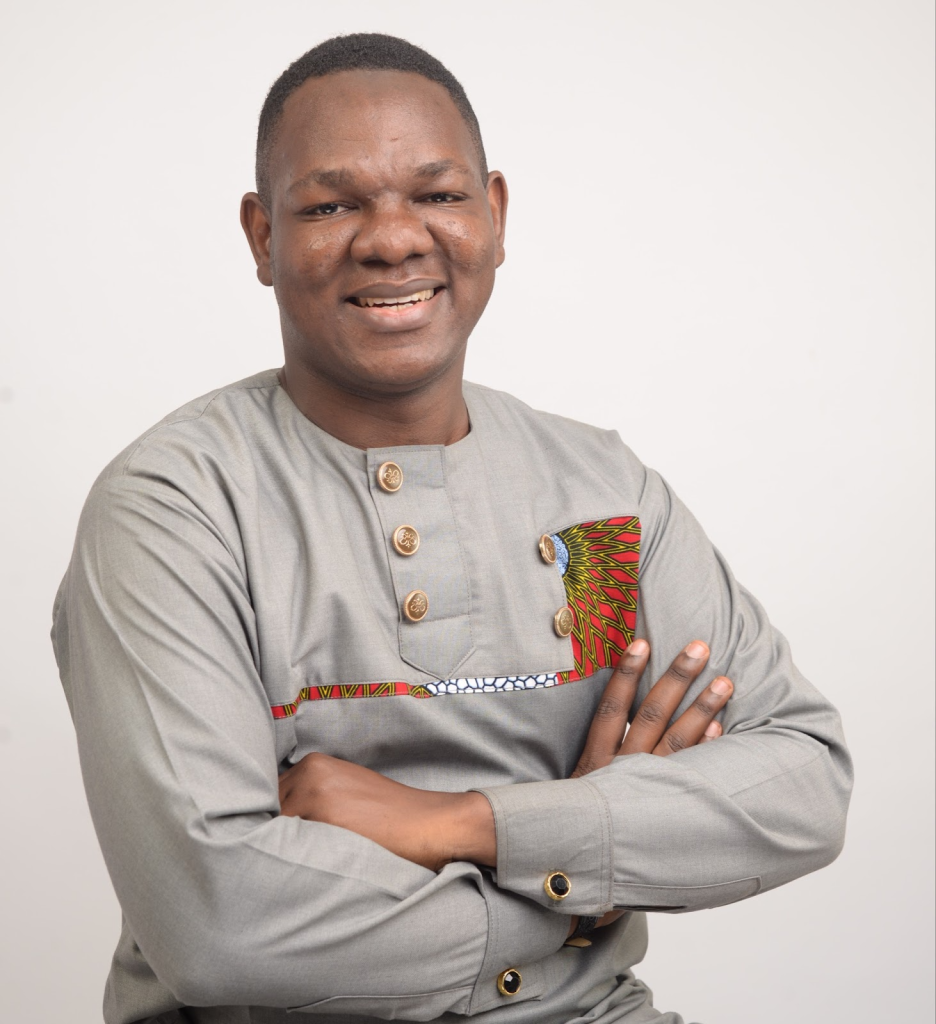
In the last 10 years, Damilola Fasoranti’s work has helped communities and networks turn their education, gifts, and skills into desired solutions. As a catalyst coach, network weaver, and social entrepreneur, he loves co-creating ‘chaos’ in learning, sharing, and communities to accelerate them towards creating positive impacts. In 2017, he created the first grassroots makerspace - a school without teachers - to trigger creativity and innovation in grassroots communities, as the Chief Listener at Prikkle Academy, Nigeria.

Network Weaver is dedicated to offering free content to all – in support of equity, justice and transformation for all.
We appreciate your support!
The paradox of transformation: acceptance as a precondition to change
The radical potential of healthy shame... to return us to belonging
This is the paradox: to reach transformation, we must let go of the aspiration for transformation. As psychologist Carl Rogers put it:
The curious paradox is that when I accept myself, just as I am, then I can change.
While I accept this truth intellectually, and it feels doable when it comes to my self-transformation work… I haven’t yet figured out a way to embody it in integrity and authenticity when it comes to my work for social transformation. David Kelleher names the tension I feel:
If you’re going to work with people for change, you have to love them… I’m still stuck with the contradiction of loving someone and making demands on their behavior in the name of justice.
It feels like I’m being asked to let go of my commitment to justice… in order to honor my commitment to justice. I don’t know what to do with that. So today I want to explore a controversial idea: the concept of “healthy shame.”
TL;DR: Toxic shame tells us we don’t belong, and offers no path back to belonging. Healthy shame reminds us that we belong, and warns us when we transgress a social norm that threatens the collective: it invites us to change our behavior, not our core sense of self. We need to cultivate the capacity to heal from toxic shame, and build resilience to tolerate healthy shame… and take action to repair harm and return to belonging. There are four steps: show up with compassion for the other; help them practice self-compassion; co-regulate to feel safe in their bodies; support the practice of new behaviors. To come into right relationship with shame is to exercise power: a tool we can use in service of justice, and to create a world where everyone belongs.
Transform behavior, not people
This feels important to underscore: by virtue of the miracle of our existence, like all beings, humans are perfect exactly as we are. It’s our behavior (at an individual, collective, and systemic level) that needs to change.
When I first started writing this post I paused for a couple days to do another deep-dive into the literature on shame and guilt (building on this post, where I first named the acceptance/transformation paradox, and this one, exploring more collective accountability questions). I want to update/amend my previous conclusions to explore the transformative potential of healthy shame.
To be clear: the way our dominant culture wields shame is incredibly toxic: any shame that contributes to paralysis, that inculcates in its target a fundamental sense of unworthiness harms our goal of enabling transformation. That is NOT what I am talking about here. There is shame that is associated with trauma, and there is shame that is associated with healing and resilience… it is this fraught latter terrain I want to explore today.
Because shame (and guilt) are social emotions that have to do with our sense of (and right to) belong, the core difference that distinguishes healthy shame from toxic shame is whether there exists the possibility of returning to belonging. If the purpose or function of shame is to exclude without offering a path to redemption, it is toxic. If instead the purpose is to illuminate a harm and invite repair… it can serve a healthy function. I appreciate Joseph Burgo’s treatment of the subject, where he explains:
Helpful shame always leaves room for improvement rather than making someone feel fundamentally worthless, with no hope for growth.
This to me is the difference between feeling shamed (you are making me feel something, which may or may not register as fair) and feeling ashamed (I internalize the assessment and agree I have done something I regret; a third party may not need to be present or aware of my transgression in order for me to feel ashamed). Annette Kämmerer explains:
We feel shame when we violate the social norms we believe in.
In this rendering, to feel ashamed is to feel the pain of finding ourselves out of integrity with our own values. As Mark Manson notes:
Our values determine our shames.
Shame defines the conditions of belonging
Shame is a social emotion: it is the enforcement mechanism for belonging. Burgo again:
Human beings developed the ability to feel shame because it helped promote social cohesion.
Social norms define the boundaries of belonging: they are the set of agreements that allow us to function and live in community. In its social expression, shaming alerts community members that they have transgressed a social norm, and invites them to take corrective action, to repair the harm. I love Miki Kashtan’s explanation of how shame functioned in pre-patriarchal societies:
When the behavior of an individual threatens the ongoing cohesion or functioning of the group, and only in those circumstances, that’s when shame emerges as a mechanism for protecting the group from the threat of an individual taking action that might endanger the group.
Burgo agrees:
Our evolutionary ancestors used shaming and shunning to encourage change, to help tribal members reform their transgressive behavior and then reintegrate.
I think of it this way: love is unconditional; belonging is not. Love (for your self as a simultaneously perfect and flawed human) is unconditional; belonging (which includes how you behave in a collective) is conditional on you adopting the pro-social norms and behaviors that allow the collective to thrive. I loved Naava Smolash’s comment on my last post taking up this topic, where she named this tension inherent in the promise of belonging:
The one condition of belonging that makes true belonging possible, is the willingness to excise those who genuinely do not care about others or are unwilling to challenge their own conditioning into dominance.
It is perhaps easiest to understand the value of shame by imagining its absence: to be “shameless” is not a good thing; it’s associated with sociopathy. I’m reminded of that classic line in the McCarthy hearings, which I hear as another way of saying: are you impervious to shame?
Using—and choosing—healthy shame
I believe there is a role for healthy shame to help encourage people to adopt these new norms… but it’s a delicate dance. Take for example the emerging awareness around micro-aggressions: misgendering or deadnaming someone for example, or inadvertently deploying a racist stereotype. I think it’s healthy and necessary to feel that initial sting: it’s to become aware that I have caused harm, and to feel shame. And of course I don’t want to stay in that feeling: it’s deeply uncomfortable. We tend to respond in one of three ways (and let’s assume for the sake of argument that the norm is a positive pro-social norm, as I believe these are):
- Internalize the shame without self-compassion; this transmutes healthy shame into toxic shame: I’m a terrible person, I don’t belong. This not only misses an opportunity for transformation, but it also leaves the harm unrepaired as I retreat into myself and disassociate from the person/people experiencing the impact I caused.
- Reject the new norm and refuse to feel shame: I don’t believe in pronouns, and I refuse to take accountability for my impact. Often this strategy is accompanied by blaming/attacking the person who made visible the transgression: instead of attending to impact, we cast ourselves as victim for not having our intention seen/honored (Jennifer Freyd coined the term DARVO to describe this approach, often used unconsciously). This too misses the opportunity for transformation and for repairing harm. I resonate with Heather Plett’s description of what’s going on here:
People who’ve convinced themselves they are good people… are suddenly sent into spasms when their biases and blindspots are revealed. They can’t fathom the fact that they are capable of causing harm. They haven’t been equipped to hold space for their own shame. Subconsciously, they’re terrified that they will be abandoned and, at worst, banished from the kingdom.
- Accept the new norm, move from feeling shamed to feeling ashamed, and try to do better. To practice self-compassion (now I know, I can do better) and to exercise responsibility for impact (I’m sorry) and accountability to repair (how can I make it better and avoid causing harm in the future?)
Our goal, of course, is to support people in choosing the third path. And: we also want to exercise individual and collective discernment about which norms we want to embrace/internalize, and which we want to rightfully reject.
There are many existing social norms that I think are harmful and incompatible with a world where everyone belongs: in those cases, I think it is incumbent upon us to reject the norm and decline to feel the sting of shame. For example, should a man choose to wear a dress, in a world where everyone belongs that’s a perfectly valid and beautiful choice: he should refuse to be shamed for it (and we should refrain from shaming him). Because I’m a nerd, I made up a 2x2 matrix trying to illustrate this.

In this understanding, guilt only occurs when you already accept/agree with a norm: by definition, you can’t feel guilty for something you didn’t know was harmful, because you couldn’t have acted differently. In the case of encountering a new norm, the initial feeling is shame, which you can then transmute into guilt by accepting the norm and committing to repair. Shame researcher Dr. Stephen Finn summarizes his findings:
The goal is to help people tolerate shame and move to guilt… healthy shame is guilt.
Four steps: from shame back to belonging
I love Stephen Finn’s reminder here:
Shame is a social emotion; it can only be healed interpersonally.
If toxic shame tells us we don’t (and will never) belong, then a culture of belonging is one without toxic shame… and one that supports people in processing their healthy shame into guilt and repair and a return to belonging. Matthew Gibson puts it bluntly:
We cannot face our shame alone, certainly not the toxic form of shame that is not ours.
I think there are four steps to supporting transformation, which I want to unpack here.
- Show up with love and compassion: The first step has to do with the motivation and attitude of the supportive partner: if we are sincere about supporting transformation, we must come from a place of love and compassion. Here’s Father Richard Rohr:
What empowers change, what makes you desirous of change is the experience of love. It is that inherent experience of love that becomes the engine of change.
- Practice self-compassion. The purpose of this compassionate witness is to provide a safe environment for them to practice self-compassion. For the vast majority of humans who struggle with self-compassion, the radical act of offering compassion to ourselves is itself the first act of transformation… and those of us who are interested in social change need to support, recognize and celebrate it as such. I credit my wife Jennifer for helping me understand how foundational self-compassion is to the entire enterprise of transformation: it helps us ensure that shame stays healthy and doesn’t turn toxic; it motivates repair instead of paralyzing us into a trauma response. Emily Nagoski is clear on this:
The antidote to shame is self-compassion.
- Feel safe in our bodies: so many of our defenses, particularly around shame, operate at the level of the sub-conscious, and are deeply shamed around trauma. Healing from shame, therefore, is not a cognitive process: it’s somatic. Our bodies need to learn that it is possible to feel safe in the face of shame… to feel at a physical embodied level that there is a path back to belonging. As change agents we can offer the gift of co-regulation: allowing them to experience our own calm nervous systems as an embodied experience of safety. Stephen Porges has a beautiful line here:
If you want to make the world a better place, make people feel safer… the first step is to develop a sense of self compassion in our bodies.
- Practice new behavior. Finally, we need a new strategy to adopt… and it has to be accessible to us. Lisa Lahey had a great two-part interview on Brené Brown’s podcast where she explains:
Motivation is a necessary but insufficient condition to actually change… People won’t make a change unless you find another mechanism to meet the need that the maladaptive behavior is currently serving.
Right. It’s not enough to let go of the old behavior; that is necessary but insufficient. We also need a new behavior to replace it; one capable of meeting the same need. If shame is fundamentally about belonging… this means supporting people in feeling like they belong. Friend and somatic coach Jesse Marshall summarized the research this way, reminding us that this sense of belonging must also be felt in the body:
The body will only let go of the old strategy if it is offered embodied experiences of the safety and efficacy of other strategies.
Mastering shame is a claim to power
Toxic shame is the master’s tool: we must reject it. More: we must work hard to refuse to succumb to it, and to support each other in healing from present and intergenerational trauma and the shame that accompanies it. As Daniel Schmachtenberger notes:
Unhealthy shame has been one of the most powerful tools for systemic control and oppression throughout history.
But healthy shame is one way those with less institutional/structural power can push back: to wield healthy shame skillfully is to exercise power. Jennifer Jacquet contends that shame can be a powerful tool of nonviolent resistance. She explains:
Shame gives the weak greater power.
In researching this piece I found myself returning to the literature (and Buddhist practice) of fierce compassion. The difference between healthy shame and toxic shame (for those of us trying to use shame in service of justice, to challenge entrenched systems of power and oppression) is the target. As Kristin Neff reminds us:
Call out the harm, not the people. Good anger prevents harm; bad anger causes harm.
(I would replace good/bad with healthy/unhealthy, and here anger is the expression of the “fierce” part of compassion that is calling power to account). This is one of our greatest strengths: one I have elsewhere called the righteous anger of hope we feel at injustice. This is to return shame to its pro-social role: as a tool to promote social cohesion in service of the whole, not the narrow interests of those in power (credit to Miki Kashtan for this insight).
One of my favorite contemporary examples that explicitly embraces shame as a tactic is the Swedish-initiated “flying shame” movement. It’s been personally effective in my own life: where even five years ago I wouldn’t have given much thought to air travel and its carbon footprint, now I think about it… and it’s influenced my behavior. I don’t like the sting of shame I feel at the disconnect between my values/beliefs (need to end carbon-intensive industry) and my actions. It’s an example of how a few individuals (including Greta Thunberg) can catalyze individual change by challenging an institutional/systemic practice… by appealing to our own values and exposing our already-existing but not-often-acknowledged dissonance. That feeling of dissonance motivates a reparative impulse. Koshin Paley Ellison explains:
Shame is what we feel when presented with evidence of our own hypocrisy... You’ll never be free until you can feel the pain, feel the sting of the ouch that inspires you to do better.
It also points to a key lesson: we must have alternative ways to meet the underlying need. Flying shame has been far more successful in Europe where there is a well-connected, fast, and reliable rail network… and much less successful in the car and plane-dependent U.S. It’s a fine line to walk: Cathy O’Neil argues that it’s an inappropriate use of shame if it’s not meaningfully possible to change behavior (e.g. shaming rural Americans for using pickup trucks, when they rely on those gas-guzzling vehicles to do heavy work and there aren’t available alternatives). She explains:
The principle is you shouldn’t shame somebody who doesn’t have a choice, and you shouldn’t shame somebody who doesn’t have a voice. If you do one of those things, that’s punching down.
She also cautions us against targeting individuals for systemic problems: the purpose of shame is to transform systems (and yes, the people who make up those systems), to make it easier to live in a world where everyone belongs. Jacquet explains the transformative potential:
Shame’s performance is optimized when people reform their behavior in response to its threat and remain part of the group… Ideally, shaming creates some friction but ultimately heals without leaving a scar.
Co-creating new conditions for belonging
The good news: I think there’s a roadmap to coming into right relationship with shame, to navigating the paradox that kicked off this post. I now feel more grounded: there is a way to show up with love… without letting go of the need for change. I think there is a necessary role for judgment and the skillful wielding of healthy shame: not of people as individuals, but of behavior and systems that are at odds with justice, with the demands of a world where everyone belongs.
Where increasingly I see mindfulness/social justice spaces arguing “stop trying to change people,” I want to offer a more nuanced response. Yes, stop trying to change people… but don’t give up on trying to change behavior. Justice insists that we stay in the struggle, that we continue the difficult work of inviting people—and supporting them—to transform.
The bad news: it’s a tall order. The first step alone may be insurmountable for many of us in the work of social justice: showing up with love and compassion for those whose behavior we wish to transform… is asking a lot. And it reinforces a core truth: we have to show up for ourselves first, and extend the very self-compassion we are inviting others to step into. That is the first act of transformation (I credit this framing to a conversation with Aisha Shillingford).
From that place of self-compassion, we have more agency to transform ourselves and the world. As bell hooks observed in her classic All About Love:
The more we accept ourselves, the better prepared we are to take responsibility in all areas of our lives.
Indeed, this is one definition I like defining the purpose of social change efforts generally, and the invitation to social movements in particular. adrienne maree brown puts it this way:
The invitation to create sanctuary and welcoming movements is to constantly grow people’s responsibility to transform the world for themselves and their people.
We desperately need new norms. Pro-social ways of living and relating that are conducive to a world where everyone belongs. And if we are serious about transformation, this means both co-creating and identifying those news ways of relating… and supporting others (and ourselves!) on the difficult path from here to there. To let go of old norms is to refuse to be shamed by them… to adopt new norms is to feel the sting of shame as we realize we have caused harm.
Of course this all begs an obvious question: how do we decide/agree on these new norms? As friend, collaborator, and parenting expert Jen Lumanlan put it in her in-depth module exploring shame:
If we can’t agree as a society what are the attributes and activities that should be considered shameful, how can we argue in favor of the continued use of shame?
I’ve intentionally sidestepped that question here, because so much of my other writing tackles this question directly (here, e.g.) I wanted to take up shame specifically because so often it is the biggest impediment to the kind of radical imagination I’m longing for. Too often we use it the way it’s been used against us… and it hurts our movements. This post is an invitation to step into right relationship with shame, and therefore to entertain the tantalizing possibility of returning to belonging.
As always, I’d love to hear what lands, what doesn’t, and how you’re making sense of a difficult and fraught topic. I’d love to join you in dialogue around it, in the comments below or in our next subscriber gathering.

Brian Stout is a systems convener, network weaver, and initiator of the Building Belonging collaborative. His background is in international conflict mediation, serving as a diplomat with the U.S. Agency for International Development (USAID) in Washington and overseas. He also worked in philanthropy with the Bill & Melinda Gates Foundation, before leaving in early 2016 to organize in response to the global rise of authoritarianism and far-right nationalism. He recently returned to his hometown in rural southern Oregon, where he lives with his wife and two children.
originally published at building belonging
featured image taken by author : "My kids enjoying the bliss of a summer afternoon along a Norwegian fjord"

Network Weaver is dedicated to offering free content to all – in support of equity, justice and transformation for all.
We appreciate your support!
donate in the box above or click here
6 Reasons Why Liberatory Leaders Need to Take Play Seriously
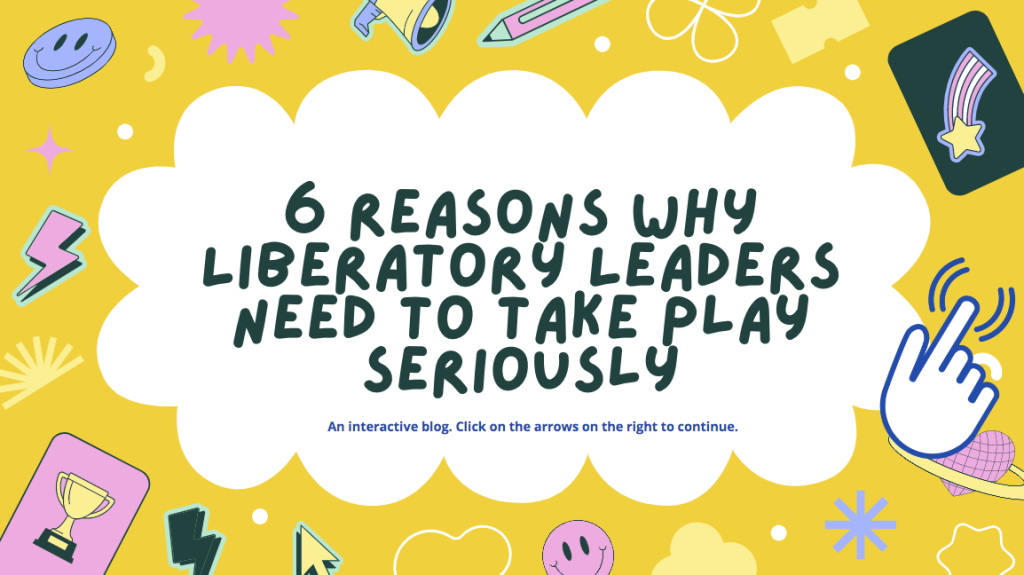
When was the last time you played, did something just because it was fun and felt good? Did you finish feeling enlivened, relaxed, energized, or something similar? Leadership Learning Community has been exploring the roles of fun and play in our activities. This exploration didn’t start out super intentional, but rather as a reaction to the pandopalypse we’ve all been living in. Over time LLC began discussing play in relation to our work, referring to aspects of our work as “playful” or describing meetings and convenings as “play spaces.” For us, this isn’t a cutesy communications strategy. As LLC began to turn our attention to play, we realized that play, when grounded in collective purpose and steeped in values, can be a liberatory act.
Here are six reasons why we believe play can help leaders embrace liberatory practice.
Fuel Ideation
- Play can be described as “something that’s imaginative, self-directed, intrinsically motivated and guided by rules that leave room for creativity.” By creating space for creativity and imagination, play helps to quiet the self-conscious, judgemental inner critic. This voice discourages deviations from the known norm and makes trying on new things feel too risky. Without that voice, perhaps there is room for a little bit of magic to invite in new possibilities. Taking a playful stance allows us to adopt a child-like or beginner's mind, and helps us to develop mental plasticity and adaptability while simultaneously reminding us that our options aren’t all pre-determined and that there is space for the not yet known. This opening of possibility is critical as liberatory transformative efforts are dreaming and imagining into being something that does not currently exist. To do that, we have to stretch our imagination muscles.
- Practice: Start the meeting with a playful check-in question like, “If you could go back in time (or to the future), who would you want to meet?” or pick a favorite zoom filter to start the meeting with. Check out more of our check-in questions here.
Nurture, Healing & Wellness
- Play is an effective way to manage stress and can be a tool of both self and collective care. Play helps us to be in the moment, similar to meditation. In contrast to oppressive practices, which are confining and restrictive, sapping our spiritual and figurative energy; the enlivening nature of playful activities may help to heal these wounds.
- Practice: Host meetings near a park, the ocean, or in nature. Take a walk. Find new analogies for the work we do.
Create New Models of Strategic Thinking
- Playing makes things real, during play we don’t just imitate we also imagine and embody (something). Trying on liberation in play spaces/playful ways allows us to feel the benefit of liberation in the moment while we are learning more than we currently know. This focus on liberation now means that during play liberation doesn’t just have to be a future goal. In addition, some studies suggest that play supports memory and thinking skills, so play may literally help us think our way to freedom.
- Practice: Do some creative writing. Some of us have and are taking a writing course with Dara Joyce Lurie. She shares a quote from Edward de Bono, “Rightness is what matters in vertical thinking. Richness is what matters in lateral thinking. Vertical thinking selects a pathway by excluding other pathways. Lateral thinking does not select but seeks to open up other pathways. With lateral thinking one generates as many alternative approaches as one can. With vertical thinking one is trying to select the best approach, but with lateral thinking one is generating different approaches for the sake of generating them.”
Expand Leadership Opportunities
- Because play utilizes “creative rules” that are distinct from the rules and restrictions of regular life, in play, there exists the opportunity, though not the requirement, to separate capacity from expertise. All of a sudden, players “can” do things even if they aren’t experts at said activity. So you can play at being a pilot without actually knowing how to fly a plane. In playful spaces more people can function as leaders, meaning more people can be actively involved in imagining liberatory practice into being.
- Practice: Acting and improvisation exercises like “Questions Only” where you act out a scene given to you with only questions.
Build Community:
- Play offers us the opportunity to connect. When we create safe play spaces there is little risk to engaging. People can show up with a less performative stance. BIPOC leaders frequently find themselves under a spotlight or a microscope. The labor of being forced to code-switch or deal with being othered is exhausting so I imagine that BIPOC leaders especially are eager for safe spaces to be themselves. Where showing up as one’s whole self is an invitation and a demand, and for the purpose of supporting the BIPOC leader not to be of utility to others. Often BIPOC leaders are told to show up as their full self because observing BIPOC leaders is good for an observer, not for the benefit of the BIPOC leader.
- Practice: Shorten the strategic side of the meeting, and incorporate the karaoke, fun, and games as part of the meeting, not just extra at the end.
An Invitation to Wholeness:
- By allowing us to focus on pleasure and fun rather than objectives and outputs, play encourages us to be more than what we can produce. Perhaps play is akin to rest in that way, and maybe we can view embracing the revolutionary possibility of play in the same way that we have begun to respect how rest can be resistance. This need for play spaces may prove to be especially important for BIPOC leaders given that kids of color are often adultified early, and deprived of the space to play freely. By recapturing play, as we have attempted to reclaim rest, we may enliven our work and find new paths toward liberation.
- Practice: Make space for play at every meeting whether it’s a check-in, the location, the activities, or the bonding event. Make play and joy part of your community agreements so they show up intentionally during your work.
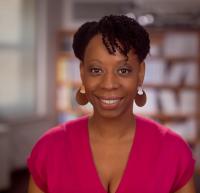
Ericka Stallings is the Co-Executive Director of the Leadership Learning Community (LLC) a learning network of people who run, fund and study leadership development. LLC challenges traditional thinking about leadership and supports the development of models that are more inclusive, networked and collective. Prior to LLC, Ericka was the Deputy Director for Capacity Building and Strategic Initiatives at the Association for Neighborhood and Housing Development (ANHD), supporting organizing and advocacy and leading ANHD’s community organizing capacity building work.

Nikki Dinh is the daughter of boat people refugees who instilled in her the importance of being in community. Though she grew up in a California county that was founded by the KKK, her family’s home was in an immigrant enclave. Her neighborhood taught her about resistance, resilience, joy and love.
originally published at Leadership Learning Community
Network Weaver is dedicated to offering free content to all – in support of equity, justice and transformation for all.
We appreciate your support!
donate in the box above or click here
by Ericka Stallings and Nikki Dinh, co-executive directors of Leadership Learning Community
Getting to the Goods (and Beyond “Folded Arms” Syndrome) in Impact Networks
“Your generosity is more important than your perfection.”
Seth Godin
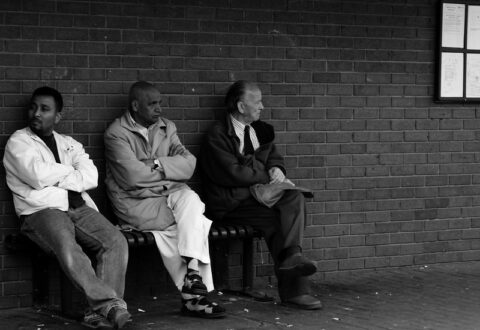
Over the past 20 years of working with a variety of social change networks, I have observed a common dynamic surface after the initial enthusiasm and launch phase. As happened recently with a place-based network about a year into its development (navigating COVID and political uprisings along the way), some members started to bang the “What have we actually done?” drum. Contextual crises notwithstanding, this is not an inappropriate or unhelpful question. As important as relationship and trust-building is, there can come a time when people want to know … “So what?” Sometimes this comes from what we might call more “results-oriented” people in the network. Or it may come from the more time-strapped and stressed, those from smaller organizations, or those who just genuinely don’t see the return on their investment. When this has come up, and people are either holding back (“folded arms”) or threatening to walk, I have witnessed and facilitated several different ways of moving through the real or perceived lack of progress.
- “If you want it, then you better put a ring around it” – In one instance, the convening team of a state-wide network essentially drew a line around all of the network participants and started claiming their successes as network successes. This might sound a bit shady, though it was not done in that spirit. By celebrating “your success as our success,” people felt appreciated and started to turn towards one another and see themselves as a bigger we. They didn’t have to wait to get to mass action. Smaller subsets having success counted.
- Get a quick win – In another state-wide network, fraught at the outset by folded arms despite the fact that people would regularly physically show up for meetings, a network coordinator seized upon a timely policy advocacy opportunity that surfaced, which resulted in a mass outpouring and a legislative win. Nothing sells like success. That early victory got people eager to see what else they might be able to accomplish and they settled in for some more relationship-building.
- Collect and share connection stories – We know that relationship-building is not just about the relationships. It can lead to new partnerships and projects. Often this happens at the start of a network, but is not tracked. We worked with another place-based network that intentionally set out to track the results of connections made in and through the network, and then shared these with the network as a whole. More about connection stories here.
- Highlight the unusual and adjacent conversations – What makes many of the networks we work with unique is that they bring together people who do not often work with each other. Highlighting this and also what emerges out of novel interactions across fields can make “just talking” into exciting explorations and engines of innovation. For a little inspiration on this front, see “Why the most interesting ideas happen at the borders between disciplines” from Steven Johnson at Adjacent Possible (!).
- Pump people up, individually and collectively – Let’s face it, in these times (and really all times), expressing genuine appreciation can go a long way. We work with a network convenor who does this wonderfully, tracking and celebrating people for their individual contributions outside of network gatherings, and constantly speaking to the power and potential of the collective. She just makes people feel good! This can make the proverbial “marathon, not a sprint” more enjoyable.
- Get a super weaver going – Having a really adept and energetic network weaver can make all the difference in the early stages of a network. We have seen the impact this can have when ample capacity is created to regularly check in with people, listen to them, make connections between different needs and offers in the system, and encourage people to share more with one another. When those exchanges start happening, the “there” there is often more apparent.
- Lift up the network champions – Generally there is a small group of people who really appreciate and lean into the value of the network from the get go (gratefully receiving and using resources that are shared, following up with new connections, testing out new ideas, leveraging the network as a platform), making it happen and not waiting for it. Observing this, capturing it, and sharing it with the network can help make the point that the network is what people make of it and give ideas for how to make this happen.
What have you done to successfully navigate impatience and intransigence in impact networks?

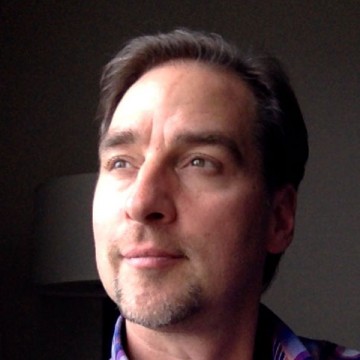
About the Author:
Much of Curtis Ogden's work with IISC entails consulting with multi-stakeholder networks to strengthen and transform food public health, education, and economic development systems at local, state, regional, and national levels. He has worked with networks to launch and evolve through various stages of development.
Originally published at Interaction Institute for Social Change

Network Weaver is dedicated to offering free content to all – in support of equity, justice and transformation for all.
We appreciate your support!
donate in the box above or click here
Belonging to ourselves, each other, and the earth
From decolonization to... re-indigenization?
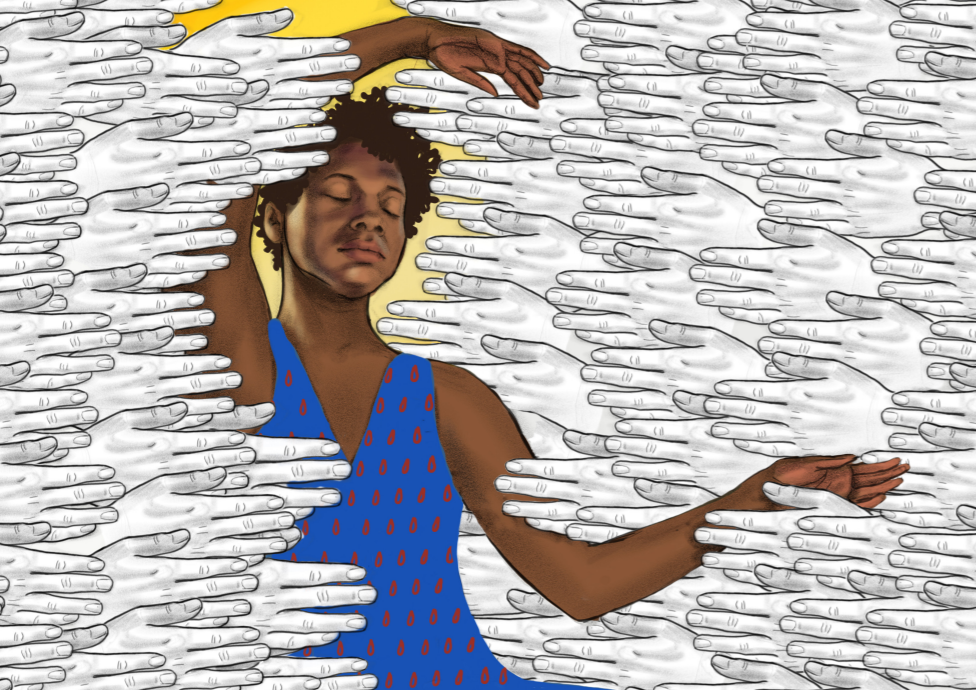
I’ve found myself increasingly interested in the promise of ‘embodiment’: the possibilities inherent in the seemingly simple act of being attuned to what our bodies are telling us. Thus far I’ve explored that concept primarily through the lens of the self, of the ‘I.’ But there’s more to it than that, something that feels powerful.
So today I want to explore the transformative potential of learning to sense and feel at three different levels: what in Building Belonging we call the levels of “I, We, World.” The promise of belonging is the promise of integration: it’s about belonging to ourselves, to each other, and to the earth.
“All transformation is linguistic”… and embodied?
This topic is especially hard to think and write about clearly because we lack the language. It’s difficult to conceptualize something if we can’t name it (an insight made famous in Betty Friedan’s discussion of “the problem that has no name.”) It was perhaps with this in mind that Peter Block provocatively wrote “All transformation is linguistic.”
I think he’s right… and the sentiment is incomplete. I do think the power of naming something is itself a transformative act: it allows us to see things in a new light, to understand an aspect of our experience that had thus far remained inaccessible. As Robin Wall Kimmerer wrote:
Language is the dwelling place of ideas that do not exist anywhere else. It is a prism through which to see the world.
But language is a starting point for transformation; it creates possibility. To realize that potential, however… requires embodiment.
This is the core insight of the emerging field of somatics, which deals with the “soma” (the Greek word for “body”). It’s at once an obvious and a radical idea: of course we move through the world in physical bodies, and of course those bodies inform our perceptions. And yet: Western culture tends to dismiss any forms of knowledge or information that are not “rational,” and emerging from the brain (I think, therefore I am). Indigenous cultures the world over have always held a more expansive view of human experience, talking instead of the heart, mind, body, and spirit. As Pat McCabe (Woman Stands Shining) notes,
The intellect is the least reliable way of knowing anything.
So I want to explore here (as always) the possibility of the both/and. Yes there is a power in naming something, in rendering a concept intelligible and accessible through words. And that’s not enough. There are other ways of knowing, feeling, and sensing… and it is these other ways that I want to explore today… at the level of I, We, and World. As MawuLisa Thomas Adeyemo said:
If we listen to our body, there is so much we can learn.
Belonging to ourselves: decolonization
There has been an emerging discourse in recent years about decolonization. There’s more there than I can unpack in this post, but the core concept is captured in the word itself: it is the antithesis to colonialism. It is a process of undoing, of unlearning… of practicing a different way of being.
Colonization is about conquest, growth, domination, enclosure, enforced scarcity, certitude about a singular way of being… it demands assimilation. Decolonization invites us to return to a world before colonization, to undo the ravages of the colonial mindset: to replace domination with partnership, growth with regeneration, conquest with harmony, scarcity with abundance… and embracing multiple ways of being. Decolonization invites a return to right relationship: with ourselves, each other, and the land on which we depend. We can understand colonization as a form of trauma at multiple levels. As Susan Raffo reminds us:
All trauma is collective, but we experience it individually.
This experience of trauma and fragmentation inspires resistance; humans are resilient, and we seek re-integration. Quoting Jacqui Alexander, the Gesturing Toward Decolonial Futures collective (amazing name!) puts it this way:
The material and psychic dismemberment and fragmentation created by colonialism also produce “a yearning for wholeness, often expressed as a yearning to belong, a yearning that is both material and existential, both psychic and physical.”
Yes. That’s it: a yearning for wholeness, for belonging. This is the desire animating the decolonial urge.
I’m coming to believe that the surest and swiftest path to decolonization is through embodiment, through learning (remembering) to feel and hear what our bodies are telling us. I was delighted to finally find the word for this last year: interoception describes our felt sense of our body’s internal states (hunger, anger, tightness in the chest, lump in the throat…). This is where most somatics work is done: at the level of the ‘I’ and our relationship to our own bodies. And in a cultural context that teaches us from our earliest ages to disregard and override what our bodies are telling us… it’s revolutionary work.
So here’s the idea I want to offer here: interoception (intentional embodiment) is one powerful way we can practice the art of decolonization. It is about reconnecting with ourselves, and orienting toward this truth: the body knows… if only we listen to it. There are many ways to practice: yoga, somatics itself, other forms of bodywork that invite deeper attunement to what our bodies are telling us.
Belonging to each other: cultural somatics?
Here’s another truth I’m coming to: all transformation is relational. If no one is an island… then surely our efforts to transform must start from that premise? Here’s Parker Palmer:
If we are willing to embrace the challenge of becoming whole, we cannot embrace it alone—at least, not for long: we need trustworthy relationships to sustain us, tenacious communities of support, to sustain the journey toward an undivided life. Taking an inner journey toward rejoining soul and role requires a rare but real form of community that I call a “circle of trust.”
Here again words fail us. I’ve been looking for the word that describes sensing into a collective: picking up the vibe in a room, feeling each other without touching. We all do it all the time… how can there not be a word for it? If you know the word I’m looking for, please share! Other languages besides English also welcome (not surprising that the colonizers lack words for a decolonial construct…)
There are some concepts that get close: “co-regulation” describes the idea that we synch to each other’s moods. But the concept I find most enticing here I first encountered through Tada Hozumi in their exploration of “cultural somatics.” Here’s how Prentis Hemphill puts it:
Culture is a place to tend to our collective embodiment.
Basically, the idea is that we have a collective “soma”: our individual bodies are part of a broader whole that we can feel and sense, and which exerts an influence on us. I think we all know this to be true (at least the idea that we are subtly influenced by those around us), but we don’t often acknowledge that reality. As Charlotte Rose observed:
We are animal bodies near other animal bodies. And we influence and impact each other all the time.
I’m not sure exactly what good practices are here for learning how to practice collective embodiment. I feel confident in echoing the refrain that transformation is inherently relational, and therefore the first thing we must do is find a community within which to practice. Brené Brown had a beautiful line here:
The key to building a true belonging practice is maintaining our belief in inextricable human connection. That connection—the spirit that flows between us and every other human in the world—is not something that can be broken; however, our belief in the connection is constantly tested and repeatedly severed.
I would go farther: it’s both a belief and an opportunity to practice in community. Skillful facilitators can help us; Ria Baeck talks of “collective presencing” as one methodology, but honestly this remains an area of inquiry for me. How can we learn to sense, feel, and act on collective embodied intelligence?
Belonging to the world: re-indigenization?
Our relationship to land is a whole post in its own right… I just want to touch on one concept here. I believe that disconnection is core to our current crises, and that re-integrating is a huge piece of the solution. Our loss of connection to land remains an open wound that we haven’t addressed… and I don’t see a way forward that doesn’t involve repairing that wound.
Indigeneity at its core is about belonging to land: it’s about living in right reciprocal relationship with the earth. Most of us have lost that. Derek Rasmussen had a beautiful article for YES! Magazine where he contended that we (White people in western cultures in particular, but to some extent all of us) are the first non-indigenous civilization in the history of the planet. These different forms of disconnection are of course related: to be separated from land is also to be disconnected from people, from our ancestry, and therefore from ourselves. Gibran Rivera observed:
We are the first generation to steal from our descendants, because we have forgotten our ancestors.
It affects all of us, for by now nearly all of us have been forcibly displaced by factors beyond our control. As Simone Weil wrote in her classic The Need for Roots: “Whoever is uprooted himself uproots others.” This is not to erase agency or accountability, but to acknowledge a long history of colonization (and trauma) that underlies its contemporary manifestations. Wendsler Nosie, a spiritual leader to the Apache living on San Carlos Apache reservation, explains:
When native people talk about decolonizing, you know everybody has to become decolonized. Everybody has to wake up to what is happening. White people are the oldest people that are colonized, then the rest of us we come after that. We’re all blind from being colonized.
The idea I’m trying to convey here is that the earth (the entire planet as a whole, but more specifically the particular land where we find ourselves) has its own “soma” that we feel, sense, and respond to. This is literally true, not a matter of spiritual conjecture. Here’s David Abram:
The body is always in a subtle interaction and engagement with the large vast body of the Earth itself.
Increasingly scientists are “discovering” what indigenous people have long acknowledged: we are inextricably connected. Greater Good Science Center recently ran a podcast on why we enjoy nature exploring what happens in our brains as we interact with the natural world… it is literally restorative for our brains and bodies. Anyone who has breathed the smell of a forest after a rain can attest to a truth science is now confirming. Robin Wall Kimmerer summarizes the research:
Breathing in the scent of Mother Earth stimulates the release of the hormone oxytocin, the same chemical that promotes bonding between mother and child.
As any gardener or farmer can attest, we all know this, deep in our bodies. We just don’t often stop to acknowledge that fact. I was reading the children’s classic Heidi with my 6-year-old where the narrator observes:
It is good to be on the mountain. Body and soul get well, and life is happy again.
Healing the land is healing ourselves
I found myself nodding along as Kim Smith, an indigenous Diné organizer explained that violence to the land is violence to ourselves. This landed with the ring of truth: it explains the visceral feeling I get when I see a clearcut in an otherwise majestic forest, or oil-soaked animals washed up on the shore after an oil spill. How else to describe that sensation if not pain? Loss?
But this too points the way forward, for the inverse is also true. As Shane Bernardo reminds us:
In healing the land we are healing ourselves, and in healing ourselves we are healing our ancestors.
But there is a sequencing here. As Glennon Doyle wrote in Untamed: “nothing can be healed if it’s not sensed first.” Channeling trauma researcher Bessel van der Kolk, Maria Popova explains:
In order to change, people need to become aware of their sensations and the way that their bodies interact with the world around them.
Again, words fail us. I believe re-indigenization is the process, but what is the name for the practice, for the act of sensing/feeling our interdependence with the earth? I just finished reading Black futurist N.K. Jemisin’s Broken Earth trilogy, and she introduces the word “sessing” to describe this (makes me think of how animals can detect earthquakes before humans… perhaps we too could cultivate that skill?)
The closest I’ve been able to find outside the world of sci-fi is the concept of “entrainment”: the notion that bodies (including objects we would consider inanimate!) have a tendency to synchronize when in contact over time.
Names are the way humans build relationship
I want to close by offering two domains of practice, returning to our theme of connecting the transformative power of language and embodiment. The first shift is linguistic: to recognize the earth and non-human life as beings worthy of respect and consideration. Here’s Ursula Le Guin:
One way to stop seeing trees, or rivers, or hills, only as 'natural resources,' is to class them as fellow beings—kinfolk. I guess I'm trying to subjectify the universe, because look where objectifying it has gotten us.
Robin Wall Kimmerer has made this a key feature of her writing and work, even offering us a pronoun echoing Le Guin: ‘ki’ (as a singular form of the plural ‘kin,’ but also a play on the French pronoun ‘qui,’ meaning ‘who’). She explains:
Names are the way we humans build relationship, not only with each other but with the living world.
“What the hands do, the heart learns”
I first encountered this concept via Movement Generation, as a welcome reminder of how humans learn and transform. Through embodied action. Katherine Gibson and Julie Graham put it well:
If to change ourselves is to change our worlds, and the relation is reciprocal, then the project of history making is never a distant one but always right here, on the borders of our sensing, thinking, feeling, moving bodies.
So… how to do that? Arawana Hayashi, creator of the art of Social Presencing Theater, offers a practice called “Body Knowing as a Vehicle for Change”:
It is an invitation to feel the connection, naturally present, between our body and the earth body.
David Abram offers another prescription:
Falling in love with the more than human earth is the deepest medicine we have available.
I’ve been ruminating on this post for a while, and struggling to find time (and words!) to convey the concepts that feel so connected to me. I’d love to know what resonates, and if you’re finding terms/ways to practice connecting yourself, each other, and the world.

Brian Stout is a systems convener, network weaver, and initiator of the Building Belonging collaborative. His background is in international conflict mediation, serving as a diplomat with the U.S. Agency for International Development (USAID) in Washington and overseas. He also worked in philanthropy with the Bill & Melinda Gates Foundation, before leaving in early 2016 to organize in response to the global rise of authoritarianism and far-right nationalism. He recently returned to his hometown in rural southern Oregon, where he lives with his wife and two children.
originally published at building belonging

Network Weaver is dedicated to offering free content to all – in support of equity, justice and transformation for all.
We appreciate your support!
donate in the box above or click here
People Stitching Earth | Oppression, Healing, Liberation, and Navigating the Terrain In Between
When we made it back home, back over those curved roads
that wind through the city of peace, we stopped at the
doorway of dusk as it opened to our homelands.
We gave thanks for the story, for all parts of the story
because it was by the light of those challenges we knew
ourselves—
We asked for forgiveness.
We laid down our burdens next to each other.Joy Harjo, “Conflict Resolution for Holy Beings,” An American Sunrise
Origin Story
The first beings were not humans or animals or even plants. The first beings were river, rock, lava, and sky. Later came plants, then animals, then last of all, came two-leggeds who became easily lost and had to learn again and again in order to remember their way. This is a story of that journey—one that started in harmony and abundance and has been transformed by settler colonialism, enslavement, and their aftermath: patriarchy, extractive capitalism, collective violence against aki, the earth, and all her inhabitants. The resulting interlocking systems of oppression choke lungs, poison waters, exterminate life, and obscure the sun.
This is not a story about re-making a fictional ideal past. Harmony, in narrative or music does not preclude disagreement or conflict. This is a story about some of the ways we can return to who we truly are and how we are meant to be in right relation to each other and all beings, mortal and immortal, sentient, interdependent, free.
The Journey
During this time of the great sickness—a time of tyranny, violence and greed—people have been harmed deeply by the practices of oppression: disconnection from source (a higher power and understanding of the world as greater than ourselves such as through spiritual, natural, cultural, ancestral, and/or creative practice); dissociation from our physical bodies; distancing from our emotions; and distortion of our stories.1 Some days the effects are overwhelming; the sickness is life threatening. Some days—with rest and soup, with love and community care—there are moments of shared understanding, connection, and transformational shifts in understanding and behavior.
Beyond rest and community care, what makes these moments possible, and the potential for such moments to multiply exponentially, is not one but many things, things that operate across the dimensions of personal, interpersonal, organizational/institutional, and societal/social systems.2 For those of us working as racial equity change makers—whether as internal or external coaches and consultants, including those who work in intersectional roles as healers, artists, and liberation practitioners—there is a familiar route that embraces organic twists and turns and yields movement in the right direction.
The current emphasis in our field on trainings, assessments, and curriculum—which are all good and necessary components of intersectional racial equity and can be catalytic, if used in their full potentiality—are too often leading people into thorny thickets and near cliff edges where they give up, abandoning the journey, or worse, go back from whence they came. This is not to say that these entry points are not useful ways of understanding our contexts and our own behavior in them, but they are insufficient in supporting the integration and embodiment of new ways of being, understanding, and engaging with the world. When we practice the elements of a liberating ecosystem, we enable the seeds of training and assessments to meet the nutrients and environments needed for them to take root and grow.
There are many ways to traverse the multi-faceted and challenging terrain created by the delusion of white supremacy, but overall the best possible paths are moving in the direction of intersectional racial equity that engages people and systems in practices of healing and liberation. We liken this process to a journey in the woods. There are a number of recognizable clearings or places that support visibility and understanding. And it is in these clearings that clarity, commitment, and learning is possible.
Unlike rational and determinist approaches to intersectional racial equity—ones that center assessment tools, analytical instruments, and pre-defined linear processes—we have found that these pathways are open-ended enough to support opportunities to digest learning and engage in intentional action, through which we can engage in cycles of feedback and reflection to support unlearning white supremacy and re-membering our practices of interdependence, mutuality, and stewardship.
Complexity and Justice-Oriented Change
Advancing racial equity is complex systems change, and while working in complexity there are very, very few, if ever, “best practices”. There are more good practices and most situations require emergent and adaptive practices.
Some characteristics of complexity—as outlined by David Snowden and Mary Boone3—are contexts where:
- “Large numbers of interacting elements are involved.
- The interactions are nonlinear, and minor changes can produce disproportionately major consequences.
- The system is dynamic, the whole is greater than the sum of its parts, and solutions can’t be imposed; rather, they arise from the circumstances. This is frequently referred to as emergence.
- The system has a history, and the past is integrated with the present; the elements evolve with one another and with the environment; and evolution is irreversible.
- Though a complex system may, in retrospect, appear to be ordered and predictable [eg. history], hindsight does not lead to foresight because the external conditions and systems constantly change.
- Unlike in ordered systems (where the system constrains the agents), or chaotic systems (where there are no constraints), in a complex system the agents and the system constrain one another, especially over time. This means that we cannot forecast or predict what will happen.”
This articulation of the characteristics of complex systems is helpful. And too, it is important to recognize that indigenous cosmologies and teachings—particularly those from the Americas and Africa—situate a complex world in which binaries and closed systems do not exist. The cynefin model, the sense-making tool that visually represents Snowden’s complexity theory, is itself from native Welsh principles and language. The word cynefin means roughly “place of our multiple belongings.”
The metaphor of a path or route, one that is organic and emergent, has the flexibility to hold the complex nature of the change we are seeking toward equity and liberation. When traveled with practices of power and leadership sharing, committed attention to innerwork, and embracing multiple ways of knowing, we live in iterations of change that both begin to prefigure the world we want and create the necessary conditions for advancing liberation in the world we are currently living in.
Charting the Terrain
Clearing One – A Reflective Pool
There are many ways to gain an understanding of where an organization and team is in terms of living into intersectional racial equity. Many equity practitioners use written or online assessments. Others hold interviews or focus groups. Some establish storytelling circles or work together to develop murals or other forms of visual narrative. Some use a mix of quantitative and qualitative (including artistic) approaches. Regardless of the approach and the associated tools and practices, the purpose is to get a complex, aggregate picture of what is, a picture of the terrain that is so much more than an organizational map. It is a layering of perspectives that helps the organization and its partners gain some sense of the contexts and conditions comprising the culture and lived experiences of people in the organization or network.
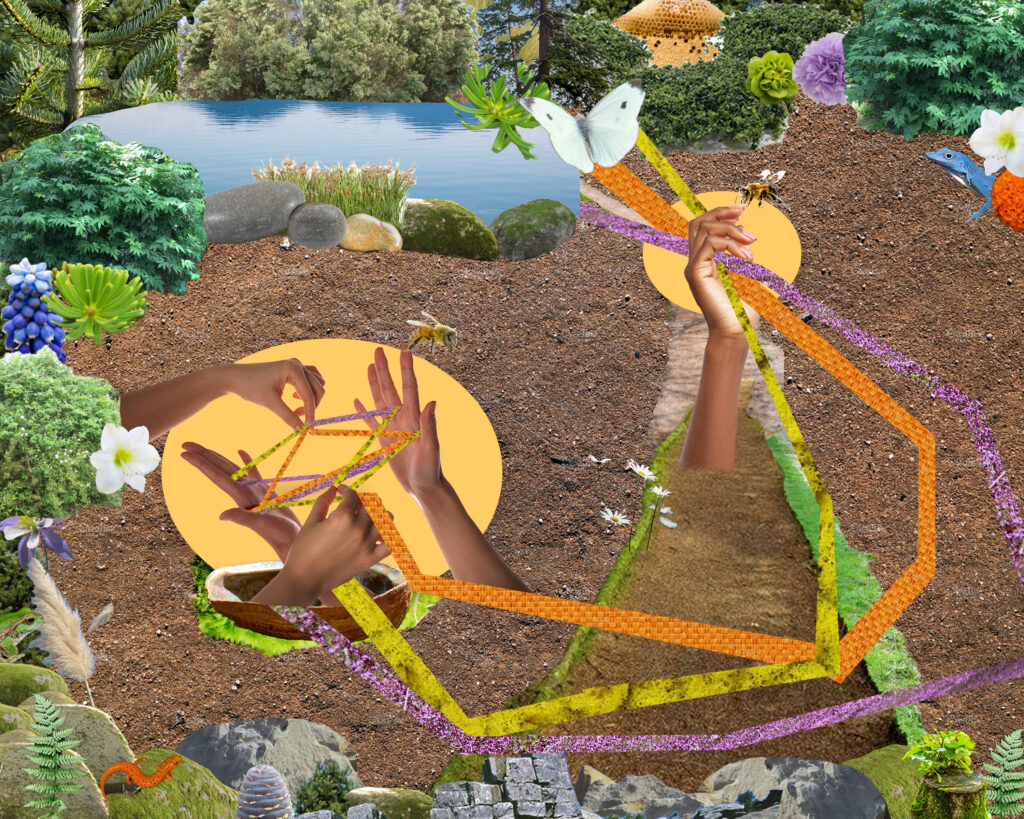
Clearing Two – A Rocky Outcrop
Once a picture of the terrain is made visible, another clearing presents itself. This rocky outcrop is a place where everyone is able to see the full and discrete snapshots of the organization and participate in a shared meaning-making process about what these snapshots might say about the team and the organization. However, collective sense-making requires some shared understanding of the current and historical structures, strategies, and belief systems that benefit some people at the expense of others. This is a juncture in the journey where indepth, whole-system conversations are crucial to restore the very real stories of settler colonialism, enslavement, genocide, wage theft, and extractive capitalism that have largely been disappeared from and or greatly distorted in our education systems. Building on these understandings, teams can also develop a shared understanding of how the continuing impacts of these legacies and other ongoing systems of oppression and inequity interact to perpetuate the manifestations of inequity in our lives and organizations. This discordant recognition is fundamental to the path.
Disagreements about what it all means and why—this generative tension—is what pushes teams and organizations toward deeper understanding. How is it that our shared language is so full of references to militaristic strategies that supported western expansion, manifest destiny and Native genocide? And how is it that the end of the enslavement of African and then African American people has done little to shift the fundamental economic, health, educational—insert just about anything here—disparities between whites and Blacks? The actual questions that teams grapple with have a lot to do with who’s on the team, their lived, racialized experiences, and the depth of their power analysis.
What matters is that teams are moving towards a shared understanding that interrupting current, intersectional racial inequities isn’t possible without having a depth of knowledge about historical inequities and the practices and systems that support their perpetuation. In this rocky outcrop, teams will often read, attend workshops and trainings, participate in caucus or affinity groups to support interrupting internalized oppression and internalized privilege. This learning journey is essential and what it entails depends on who is on the journey together. Among people of similar racialized identities it may mean grappling with global colonialism and the ways that it has impacted different peoples and different families’ histories. Healing often becomes a central focus, calling in ritual and ceremony to support the processing and release of past and present trauma.
This can be a difficult time in an organization. The fallacies that held the team together have been stripped away. But nothing new is yet in its place. It is a time for care and humility. It is a time to support the ingestion and digestion of the pervasive, corrosive presence of racial equity, making space for the restoration of our collective humanity within and across all racialized groups. It is a time for reconnecting to source, reengaging our bodies, reclaiming our emotions, and reweaving the fullness of our stories. This can mean a necessary, intentional, and sometimes scary unmooring in the day-to-day. And too, it is an opportunity for people to show up differently and build the muscle and heart necessary to get to the next evolution in the process. It requires cultivation of courage, humility, and room for risk-taking, as well as tools supporting accountability and collective tending to harm. This place demands space and time. This place requires more of us than we have sometimes been able to give. There is a necessary clarity that comes from such disruptions. As Norma Wong says, “transformation requires agency.” Some people may, in fact, choose not to move with their team or organization. And that is part of the journey too.
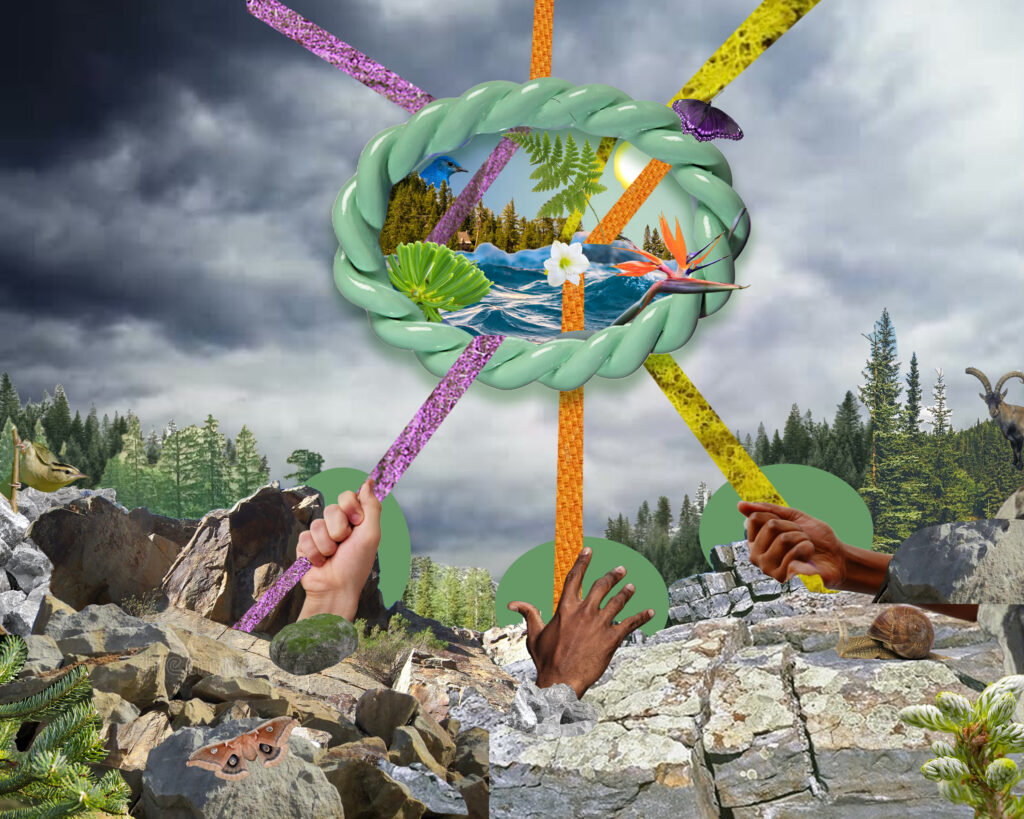
Clearing Three – A Sudden Vista
Through a commitment to authenticity and rigor—and doing the necessary work of deepening our understandings of historical and current conditions that affect our individual and collective experiences—we come to a sudden vista, an opening in our capacity to see a different future. A future where we all have the ability to thrive.
It is here that a visioning process can truly expand our shared picture of a liberated and liberatory future. From this vision, we can outline the values and principles that guide how we be with each other in liberating ways and define some key short term and long term transformation efforts, arriving together at those aspects of the organization that, if transformed, would enable people to experience an actual taste of equity in the immediate term while working on efforts to change the organization overall in the long term.
What we are creating is not new, yet it can be wholly unfamiliar. However, we have everything we need to make this visionary future possible. It simply requires courage, imagination, and the willingness to move as if we have one foot firmly on land and the other submerged in the tumultuous and profuse waters of the sea.4

Clearing Four – A River Flows
Once the vision, values, hopes, and dreams, the team can start developing some focused priorities and goals and the implementation effort begins to flow. But equity transformations are always a mix of inspirational visions and more tangible decisions and practices. Weaving across the two is the art of advancing complex systems change in which we are developing experiments across the organization’s functions and programs. Or it might be one or two short and long term efforts from which the team and organization is continuing to learn and to refine in ongoing cycles of reflection and growth. What matters is that the effort is continuous and fluid, and that the fluidity takes into account boulders, logs, beavers, otters as obstructions are also natural innovations to the existing ecosystems. Throughout this process, the team is meeting current capacity and emerging circumstances in ways in which both the vision of equity and the realization of equity are contiguous tributaries in the river’s powerful flow.
Context Affects the Terrain
While we are all swimming in the torrential waters of racial inequity and other intersectional forms of oppression, we are affected differently. Some are buoyed by floatation devices. Some are carried along by speedboats. Others are fighting to keep their airways above the surface of the water. The same is true for leaders, teams, organizations, and networks.
To make sense of these differing contexts—at all of the levels of racial oppression including internalized, interpersonal, institutional and systemic—we are going to describe differing approaches based on where different types of individuals, teams, organizations and networks live along a white dominant-to-liberatory spectrum: 1) White Supremacy Culture, 2) Multicultural Stance, and 3) Pro Black and Indigenous.
While such classification efforts are inherently overly simplistic, there is sufficient value in outlining different approaches based on these categories, contexts and associated conditions.
1) White Supremacy Culture (aka “The Delusion of White Supremacy & the Culture that Upholds It”)
In an organizational culture of white supremacy, organizations are habituated to working in ways that uphold the delusion of white supremacy whether intentionally or not. These cultural practices have been laid out in the work of Tema Okun and continue to be deepened by other racial equity practitioners. Initially identified as thirteen habits, the framework has evolved to include nuanced descriptions of behaviors that reify inequity, transactional relationships, and oppressive power structures. These cultural habits are exemplified by valuing perfectionism, individualism, fear, right to comfort, competition, urgency—and drive most organizational decisions and overall organizational culture in white dominant organizations.
These organizations are most often:
- White led and/or have a history of white leadership and predominately white staff (not always white-led; may include people of multiple races at various levels of the system but not in large numbers in leadership and if so, not for very long);
- Equity focus is on diversity, equity & inclusion (DEI), with an emphasis on diversity; and
- People exhibit and experience disconnection from source (a higher power and understanding of the world as greater than ourselves such as through spiritual, natural, cultural, ancestral, and/or creative practice); dissociation from their bodies; distancing from their emotions; and distortion of their stories.5
- There are also historically people of color-led organizations that operate predominantly in this fashion; most often they are in areas of work that are deeply steeped in white supremacy culture such as some legal, policy, research, philanthropic and merit-based youth-serving organizations.
Deep equity work in this context focuses on making visible the ways in which white supremacist ways of being and doing are operating as an uninterrogated norm which serves to reify white leadership and the myth of white supremacy and/or undermine the wisdom, gifts, and value of BIPOC people. Organizations in this category are often set up to support the learning, comfort, safety, and power of those in leadership and particularly white leaders. Change processes can unintentionally replicate these patterns at the expense of native people and people of color.
Racial equity change makers will often focus on cultivating equity-based awareness and understanding with white leaders in the system to ready them and thus the organization for deeper equity work. This aspect of the change effort can be very depleting for staff of color in every level of positional power as well as for all staff with less positional power within the system. The tax of this effort is in direct relationship to white leaders willingness, courage and capacity to develop a baseline understanding of structural racism and intersectional elements of oppression. If leaders are resistant to deepening their awareness and/or actively suppressed learning then little progress can be made without developing alternate leadership structures to support the organization in its evolution.
2) Multicultural Stance
In multiracial/multicultural contexts, organizations tend to exhibit characteristics of both white supremacy culture and what Okun would call “antidotes.” In this instance, an organization might be more recently led by people of color and/or have significant numbers of people of color throughout the organization including on the leadership team. In this context, the racial equity and liberation (REAL) work is more often focused on equity, which is made possible by the fact that people in the organization have a solid understanding of structural racism and intersectional elements of oppression.
The organizations are often actively seeking to disrupt the habits of white supremacy culture and people have more shared practice of expressing the harm caused both within and beyond the organization. However, having not yet fully developed the muscles of an equity-based organizational culture, the organization and its leaders will often default to white supremacist ways of working in urgency or in high-stakes decision-making, for example relying on positional power instead of embracing wisdom, experience, and skill-sets from multiple people in the system and therefore have trouble implementing equity-based systems change internally.
While all racial equity work needs to center healing, the work in multiracial/multicultural contexts often necessitates a focus on healing at intra-personal, interpersonal, and organizational levels simultaneously in order to create the needed conditions for equity-based systems change. REAL change in this context is about unlearning our beliefs and related actions as a result of internalized oppression and our complicity with white supremacy as people of color. For white people in all contexts, the work is about interrogating internalized white supremacy so that long standing ways of maintaining privilege are dislodged, making space for new ways of living and being that don’t center whiteness and the power it exerts in explicit and implicit ways. Specifically, in multiracial/multicultural contexts, white people tend to have more systems based understanding but are often still struggling to recognize that impact is not exclusively the result of individual intention. The arc of learning in this context is to develop a more complex understanding of the relationship between “it’s all my fault” and “it’s all the systems fault” in order to recognize that—because of race, power and privilege—they are both simultaneously true. In order to live into this complexity, it calls on all of us to begin to embody new ways of being.
3) Pro Black and Indigenous
In contexts where Black and Indigenous people, wisdom, and cultures are centered, organizations are led and predominately composed of multi-identitied or single-race identified Black, Indigenous and people of color (BIPOC) that have done work to address anti-blackness and anti-indigenity as a collective. The organizational vision and mission are rooted in social justice and liberation. People exhibit greater connection to source. They are in touch with the wisdom of their bodies and their emotions and are resourced by and able to be in whole and simultaneous stories. The focus of the work is beyond equity toward liberation and sovereignty.
In this context, healing work (individual and collective) is both foundational and ongoing as the organizational culture exists in a wider, toxic, and systemically oppressive society. In addition to engaging in healing and liberating practices, liberation requires continuing to address inequities; building our collective muscles for engaging in generative conflict, giving and receiving feedback, and holding each other in loving accountability; in addition to developing and evolving more equitable power structures and practices. It takes collective care and courage to embody and enact the systems, structures, ways of being that emulate the world we want.
There is great potency in this context as it creates the ability to experience some of the new world that we want while still living in the hollowed shell of a decaying, oppressive society. And too, the dissonance between two worlds requires rigorous attention and care on the part of the team as well as humor and love. It is here that we begin to crack open the old and spill toward the new.
“When I dare to be powerful to use my strength in the service of my vision then it becomes less and less important whether I am afraid.”
Audre Lorde
Approaches and Practices
So much of the focus of racial equity-based system change is on tools and frameworks. This tendency reflects the white dominant habit of overvaluing numerical data and the written word. While surveys, assessments, numerical analysis and the frameworks that outline how to apply them are valuable, they will not, in and of themselves, lead to intersectional racial equity let alone liberation. What will lead to equity is changing both what we do and how we be together. Assessing where an organization in terms of racial equity is the first tiny step and can be harmful if other steps don’t follow.
The Elements of Transformation
We have found that the most essential approaches to advancing intersectional race-equity systems change are those rooted in the elements of transformation toward liberation acting as the five fingers of one hand:
- Deep Equity & Liberation
- Complex Systems Change
- Leadership & Power Sharing
- Innerwork
- Multiple Ways of Knowing
What we are up to in our justice work boils down to equity and liberation whether we are talking about environmental justice, gender justice, educational access, or any of the social and economic harms resulting from the legacies of slavery and colonialism in the U.S. Advancing this kind of change IS complex systems change. In order to lead complex systems change, we must expand our understanding and expressions of leadership to embrace power-sharing and collaborative action. Leading together in this way requires innerwork, so we can be present for and resilient with change, and expanding how we know and what is considered wisdom in order to dislodge the dominance of white, western culture. This is individual and collective work. We have written extensively about this. For a deep dive, please read our blog on Practicing the Elements of a Liberating Ecosystem and earlier articles published in the Nonprofit Quarterly (NPQ): Pursuing Deep Equity, Cultivating Leaderful Ecosystems, Embedding Multiple Ways of Knowing, Influencing Complex Systems Change, and Centering Inner Work.
Equity-Focused Teams
In organizations and networks, particularly majority white and/or white dominant culture and multiracial/multicultural ones, any equity focused effort needs to be supported by an internal equity team—one that draws on the organizational diversity in terms of roles, experiences, expertise and identities. In order to advance equity, there needs to be an aligned and skilled group to shepherd change that has the credibility to champion emerging changes. Some of the qualities of equity team include:
- people committed to equity;
- people who have some lived experience of the effects of intersectional and systemic racism;
- people committed to the mission and vision of the organization;
- people who have either have the decision-making power and/or influence ability to advance change;
- people willing and able to commit to the time and effort equity efforts will require (note: the organization needs to be sure to make this focus and attention possible, e.g. this can not be an additional item added to people’s work expectations without removing other things);
- people able to hold confidentiality (share learning not other people’s information) and
- people able to engage in difficult conversations and see the potency of generative conflict
In contexts where Black and Indigenous people, wisdom, cultures are centered and organizations are rooted in a liberatory stance, the commitment to and experience with advancing racial equity exist across the organization and power is shared more broadly. In this context an equity team may or may not be necessary. Rather equity transformation efforts can be held in existing structures and team compositions. Racial equity coaching and consulting support in this context is even less about the doing and more about the being, tending to the complexities of transformational change in interracial teams and organizations while existing in a violent, toxic, and oppressive society.
Internal Skill Development
In all contexts, advancing intersectional racial equity requires that we develop and/or deepen our skills in being deeply present, loving, and human with one another. It means we need to lift one another out of survival states—where all energy is necessarily focused on getting our basic needs met—and cultivate the ability to be present to past and current suffering, giving voice to what has been unspeakable, entering conversations from a place of deep curiosity, and being willing to engage with difference—different perspectives, experiences, ways of making sense of the world. We do this because the change we seek actually requires all of us. It will not happen because of a few exceptional leaders. American exceptionalism is actually part of the knot that binds us in deeply inequitable ways.
Depending on their context, as outlined in the earlier section, and the existing experiences and expertise of different teams, new skills and/or muscles (as the nascent skill may actually exist it is just underutilized) will need to be developed. That said, there are some foundational skills and/or muscles needed to advance racial equity and the interdependent elements of a liberating ecosystem. They are:
- the ability to engage in generative conflict—actually embracing difference and the ways it can lead to conflict as a source of creativity and change;
- providing real-time affirmative and critical feedback on how we are impacting one another so that we can learn and grow;
- recognizing that organizations, leaders, teams and networks need supportive structures and practices to survive in all times and most certainly to thrive during equity change efforts so be sure to get your foundation set before building something new; and
- holding loving accountability with one another – “the practice of loving accountability consists of honest and authentic communication, vulnerability, and the willingness to hold each other accountable for our impacts—beyond just words. If a collective value or guiding principle is repeatedly violated by someone, and no amount of communication and support can interrupt it, then loving accountability instructs us in employing meaningful consequences—not as punishment but rather as ensuring the health of the collective through meaningful boundaries.”6
Depth of Engagement
Any authentic, intentional and focused effort to advance intersectional racial equity has the potential to lead to transformational change. Such change could be evidenced by significantly increased understanding of systemic racism and the ways internalized supremacy is playing out in a white leader’s priorities and decision-making. Transformational change could look like a BIPOC team’s success in deepening its generative conflict muscles and being able to really unpack unspoken assumptions and internalized oppression in order to create new ways of advancing its vision and mission that supports the team in being and acting from liberation.
There is no “right approach” to support equity-based systems change. Rather there are necessary nutrients to ensure such an effort will seed, root and flourish. These nutrients are similar whether we are providing one on one coaching, team facilitation and support, or an organization-wide equity change effort. While all plants require differing amounts of sun, water, warmth, all require the fundamental macronutrients of carbon, hydrogen, nitrogen, oxygen, phosphorus, and potassium.
- Clear sense of purpose of and strong commitment to equity effort and its alignment with vision, mission and strategies;
- Willingness to let go of existing practices, structures and approaches and experiment with new ways of being and doing in order to change, learn and grow;
- A recognition that the wound of intersectional racism is still festering and any effort to heal and transform it brings with it the possibility of new injuries, discomfort, alternating periods of remission and acute illness and requires an enduring commitment to stay the course.
As individuals and teams evolve their application and wisdom of intersectional race equity and liberation, there are some frequent markers of understanding that mark this transformation. We draw these from some of the components of Jay McTighe’s and Grant Wiggins’ Understanding by Design framework.7
Perspective
Regardless of the context they are in, individuals and teams are able to articulate and apply the importance of race equity work in their day to day intentions, priorities, and decision making.
Empathy
In all contexts, individuals and teams are deepening their capacity to listen and see and feel things from different points of view and honor the lived experiences and perspectives of one another all while moving toward equity and liberation.
Self and Group Knowledge
People demonstrate a recognition and ability to grapple with their biases, triggers, and self perceptions in order to deepen their own and the team’s capacity for equity-based systems change.
These markers reflect some of those outlined in the modes of the Liberatory Design8 cycle, although those modes are stages of a process and what is being outlined here are markers of understanding, how you might know things are shifting in meaningful ways. Nonetheless, Liberatory Design provides an integrative approach—weaving across design thinking, complex systems change, and racial equity— and serves as another way of thinking about cognitive and behavioral approaches to change rooted in experimentation.
Moving through an Unfamiliar Present Makes Possible an Equitable and Liberatory Future
To live as if. It is not easy. Inner work and our cultivation of the capacity to be present, to see what is, to be part of the rapid, long and slow process of evolution, revolution, to breathe through it all is so necessary. Throughout this work we will dance and sometimes stumble and fall. Our cores must be both strong and flexible; and it takes all of us to reach our appendages toward each other, to lift one another up.
The world depends on us. Race equity and liberation (REAL) work gets us closer to holding each other in a field of love, from which place so many of the ills of the world are healed. As Paula Gunn Allen writes in Grandmother’s of the Light:
“It is said at the time of the beginning, the Goddess will return in the fullness of her being. It is said that the Mother of All and Everything, the Grandmother of the Sun and the Dawn, will return to her children and with her will come harmony, peace and the healing of the world. It is said the time is coming. Soon.”
We are here to turn the wheel toward a new beginning. One in which all of her children are free.
Collage credit: Naima Yael Tokunow
Originally published at Change Elemental
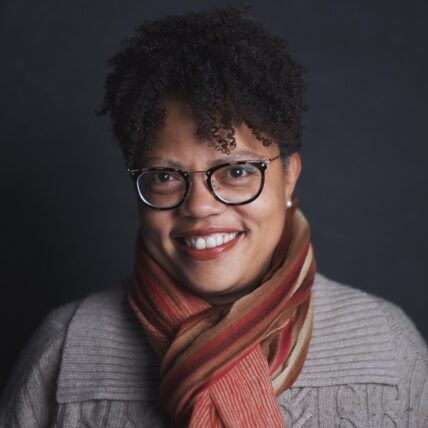
Elissa Sloan Perry (any pronouns used with respect) is of African and Mississippi Choctaw descent, hails from Missouri, and is a 30-year resident of California. She supports people with a vision for an interdependently thriving people and planet to be better in what they do. Elissa joined Change Elemental in 2013 as the Program Catalyst for the Network Leadership Innovation Lab, became CoDirector in 2015, and transitioned to the Leadership Hub in 2021.
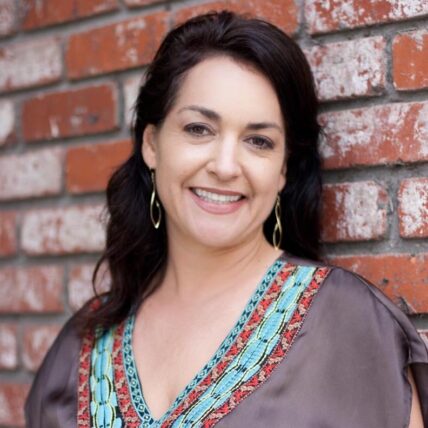
Aja Couchois Duncan (she/her/we) is a San Francisco Bay Area-based leadership coach, organizational capacity builder, and learning and strategy consultant of Ojibwe, French, and Scottish descent. A Senior Consultant with Change Elemental, Aja has worked for 20 years in the areas of leadership, equity, and learning.
1 This framework for understanding the ways oppression separates us comes from the profound and inspiring work of Monica Dennis.
2From the work of Camara Phyllis Jones, “The American Journal of Public Health,” Levels of Racism: A Theoretic Framework and a Gardener’s Tale 90, no. 8 (August 2000): pp. 1212-1215, https://doi.org/10.2105/ajph.35.12.1319, and john a. powell, “Structural Racism: Building on the Insights of John Calmore,” North Carolina Law Review 86 (2007): pp. 791-816.j
3David J. Snowden and Mary E. Boone, “A Leader’s Framework for Decision Making,” Harvard Business Review, November 2007, pp. 1-9, https://doi.org/https://www.systemswisdom.com/sites/default/files/Snowdon-and-Boone-A-Leader’s-Framework-for-Decision-Making_0.pdf.
4“one foot in the water / one foot in the sand is where I hear the best.” Alexis Pauline Gumbs, Undrowned: Black Feminist Lessons from Marine Mammals (Chico, CA: AK Press, 2020).
5 This framework for understanding the ways oppression separates us comes from the profound and inspiring work of Monica Dennis.
6Aja Couchois Duncan and Kad Smith, “The Liberatory World We Want to Create: Loving Accountability and the Limitations of Cancel Culture,” NonProfit Quarterly, May 19, 2022, https://doi.org/https://nonprofitquarterly.org/the-liberatory-world-we-want-to-create-loving-accountability-and-the-limitations-of-cancel-culture/?utm_content=208660872&utm_medium=social&utm_source=linkedin&hss_channel=lcp-542508.
7David J. Snowden and Mary E. Boone, “A Leader’s Framework for Decision Making,” Harvard Business Review, November 2007, pp. 1-9, https://doi.org/https://www.systemswisdom.com/sites/default/files/Snowdon-and-Boone-A-Leader’s-Framework-for-Decision-Making_0.pdf.
8“Introduction to Liberatory Design,” National Equity Project, https://www.nationalequityproject.org/frameworks/liberatory-design.

Network Weaver is dedicated to offering free content to all – in support of equity, justice and transformation for all.
We appreciate your support!
donate in the box above or click here
Coaching for Awareness-Based Systems Change
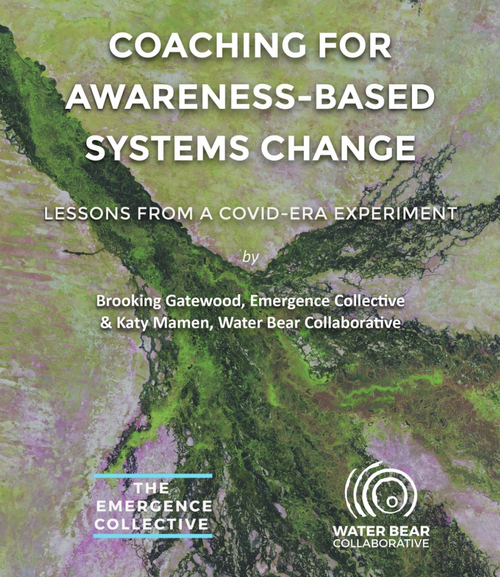
In the fall of 2019, a few of the founders of the Illuminate network (including CoCreative, Garfield Foundation, McConnell Foundation, and Academy for Systems Change) collaboratively hosted a gathering of systems change “capacity-builders” who work as independent consultants or in small collectives as facilitators and advisors, from the US, Canada, Mexico, UK, EU, and First Nations. This was the first time these practitioners had been invited to meet together with peers to share their perspectives on the state of the field. The North American contingent of the group continued on through the upheavals of the pandemic, meeting virtually in 2020 and 2021 to explore themes of equity and integrating health and healing into systems change practice, as well as launching a pilot pairing senior and emerging practitioners to explore what systems-centric approach to leadership coaching might look like.

CLICK HERE to learn more about this unique systems coaching pilot or visit the Network Weaver resource page to download the full article.
Check out the infographic below for some of the key insights from their COVID-era dialogues on the state of the field of systems change.
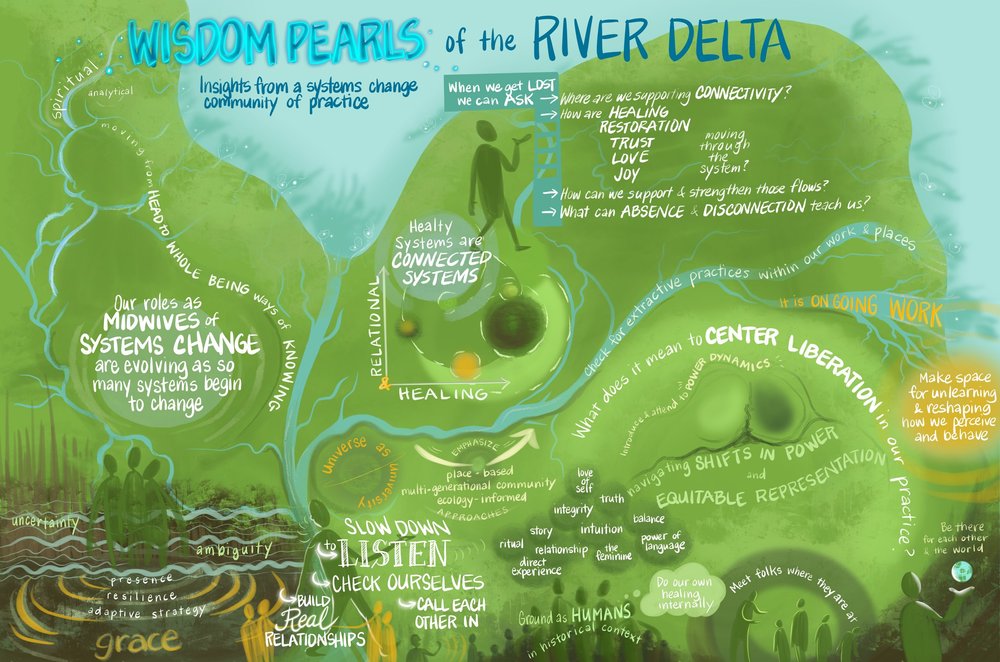
Learn more about the wisdom pearls HERE

You can also download a pdf with a link to this information to save to your personal library by visiting the Network Weaver Resource Page.
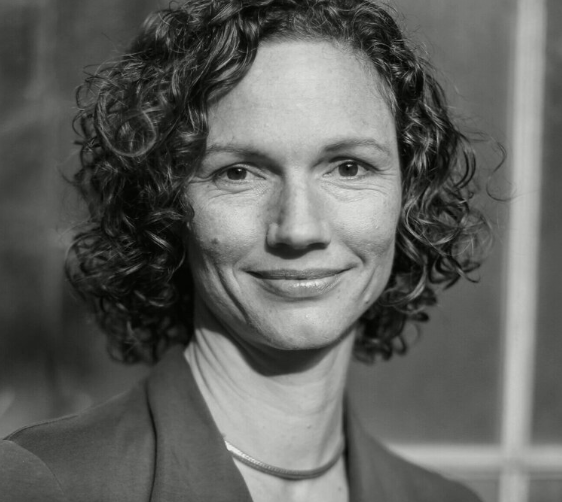
Katy Mamen is passionate about participatory change-making approaches that account for the complexity of multiple, interconnectedness crises and diverse lived experiences. She brings thoughtful and committed partnership to social sector clients advancing transformative systems change, drawing on expertise in social change strategy, facilitation and group process, systems theory, collaborative networks, and organizational development. In addition to process expertise, her work is informed by a strong background in economic justice, food & farming, water issues, and rural equity.
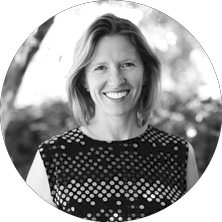
Brooking Gatewood helps leaders and groups clarify and enact the change they want in themselves, in their workplace, and in our shared world. At heart, her work is about co-liberation from systems of ‘power over’ and moving toward systems of ‘power with’ that honor individual agency as well as collective interests and wisdom. In practice, her coaching and consulting focuses on transformation across levels - from individual and team mindsets and behaviors to large-scale policy and systems change.
Originally published at IlluminateSystems.org

Network Weaver is dedicated to offering free content to all – in support of equity, justice and transformation for all.
We appreciate your support!
donate in the box above or click here
On Collective Liberation and Natural Networks: an Interview with LLC’s Nikki Dinh and Ericka Stallings
I was able to meet with the Co-Executive Directors of the Learning Leadership Community, an organization I’ve long admired for their commitment to a community-focused transformative leadership practice. This past year, LLC was able to return to a co-Executive Director model which has freed up both Nikki Dinh and Ericka Stallings to focus on shifting LLC towards a more liberatory transformative leadership model. Part of this shift involves supporting the ongoing work of Network Weaver as it provides tools and resources to scale up access to weaver spaces and serve as a platform that amplifies the impact of BIPOC weavers and leadership practitioners on their communities. More deep-rooted shifts involve the difficult work of making even more room for thinking about and practicing liberatory frameworks that make equity work within this system sustainable for people who come from othering backgrounds.
“We look at leadership as a tool for transformation. To say that we are “equitable” within this current system, which is in and of itself inequitable is not necessarily our goal. Racial Equity being a path towards liberation, that's the change that we're trying to seek.”
– Ericka Stallings
In this interview, we talk a little bit about both Nikki and Ericka’s vision for LLC, liberatory processes, how community is the first network we come into, and why the work LLC is doing matters right now. Nikki and Ericka’s responses have been edited for clarity, but all effort has been made to maintain the integrity and spirit of their words.
* * *
Can you talk to us a bit about liberatory processes?
Nikki: “Liberatory” is a why, but it's also a how for me, because it's not a destination. It’s not like race equity, where you can measure your way to a certain point in the data and then it switches over to being more equitable for certain communities. Liberation, collective liberation, co-liberation, however you want to see it, is going to be a forever journey. We’ve seen what it does to our community members when non-profits focus only on getting the data or policy right—there’s a disconnect. And so how we do it really matters to people. Ericka and I always talk about what it takes to make a movement or network whole. How do we get to just work in just ways? It's not the technical titles like executive director and weaver, though we need those too, but what we know from our experiences is that we need everybody--we need somebody like Ericka’s mom who will nurture you, and we need an aunt who is always keeping an eye out for all the resources and trying to connect people to them. The “how” stems from a deep love for people. We’re trying to bring some of that back, some of that love and care for each other while we're doing this really difficult work.
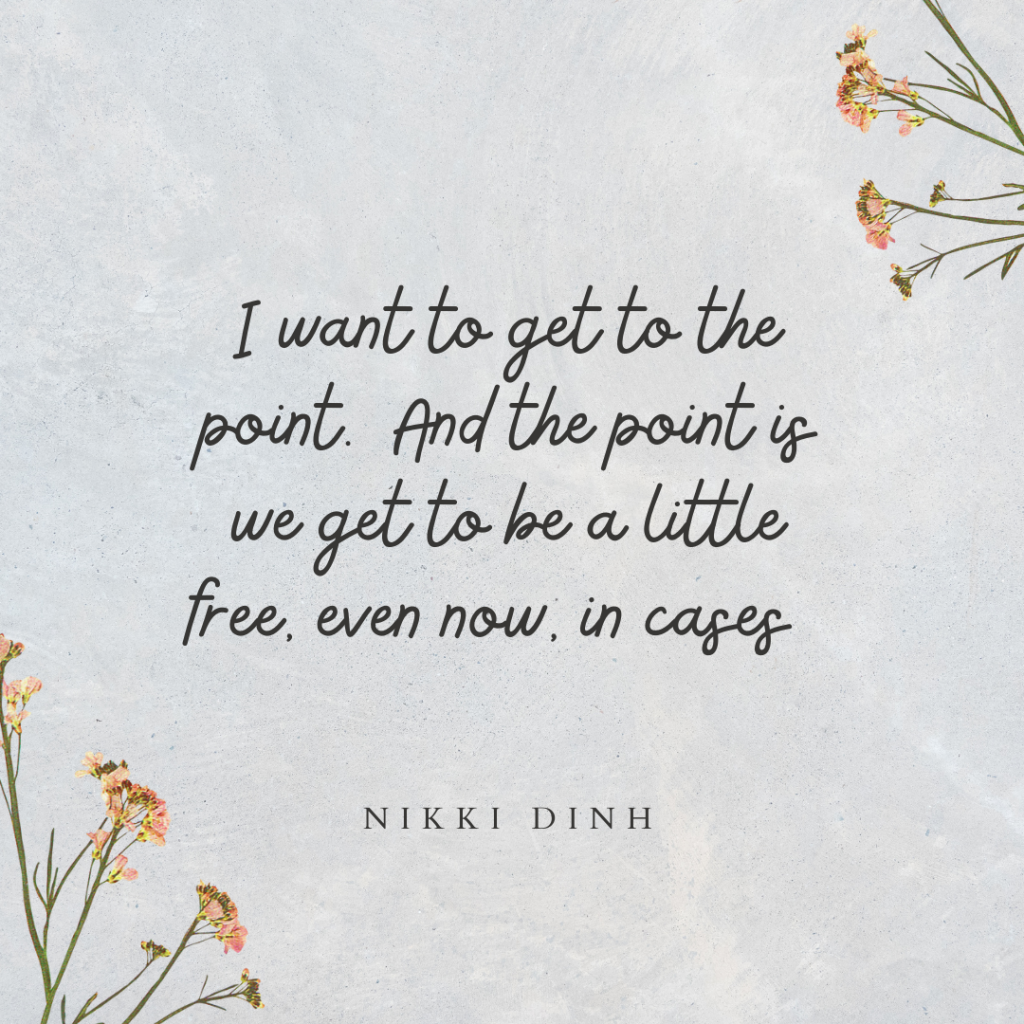
What's one thing that that Network Weaver, or even LLC is doing differently, to transform the field of leadership?
Ericka: We are shifting towards a different lens that asks: what does a collective liberation look like? What does it mean when we free ourselves and each other? That’s one change. We are also getting clear about what these questions around equity, liberation and transformation mean in different contexts. LLC is mostly domestic, whereas Network Weaver is international and therefore has a broader reach. Networks are not just interesting tools, but they actually result in change. How can we explore what a change ecosystem looks like and the role leadership plays in that? How can really thinking about the needs of varying stakeholders, and not just being focused on terms and buzzwords that are exciting, help us capture all the work that goes into the change process? How do we support the leadership of all of those other folks who are in that ecosystem? Holding space for those questions and others is one way I think we’re committed to doing things differently.
What is your vision for Network Weaver?
Nikki: Network Weaver is a tool and resource. Ericka and I have this analogy about pollination. In areas where bees and butterflies and all the natural super pollinators are dying off, there are efforts to self-pollinate or find other ways to pollinate. And that's why Network Weaver is so valuable to me. It's like an artificial butterfly. It’s trying to help solve a crucial short-term problem until we can get that butterfly population back up. It’s a useful tool to scale when we need to scale, but how can we also pay attention to what makes bees and butterflies thrive in the natural habitats because the goal always is to have natural networks. Growing up in a refugee community, we had a large cultural network and within that so many alternate systems to meet the needs of the community. You need to borrow money? You need prescription pills? There were people doing that for each other! I envision us also zooming out to see and appreciate a natural network of weavers that continue to connect and build alongside the Network Weaver space.
What's your vision for LLC?
Ericka: Oh, we have lots of ideas and hopes and dreams for LLC! Something that I hope doesn't change is that LLC is very relational. LLC is very people-focused, we care about people. It’s also a space that welcomes joy. And that's something we want to grow into. A vision that I have for LLC is that it is a space where people who want to lead in liberatory ways, and folks who want to support leadership that is transformational and liberatory, can collaborate. We are a space of experimentation, innovation, and community. I hope as a consequence of our work, that there are stronger movements for justice.
One of the things that I appreciate about LLC is that we are eco-centric rather than egocentric, which is something that our founder, my predecessor, used to say frequently, and I really value not having to make sure everyone knows that “it's us.” It’s more important that the work happened, rather than the credit be attributed to us. That focus on the communal, the collective, the ecosystem is something that remains part of the vision that I have for LLC. Our work has not just been about products and deliverables, but liberatory processes, and that has made the work fulfilling and joyful.
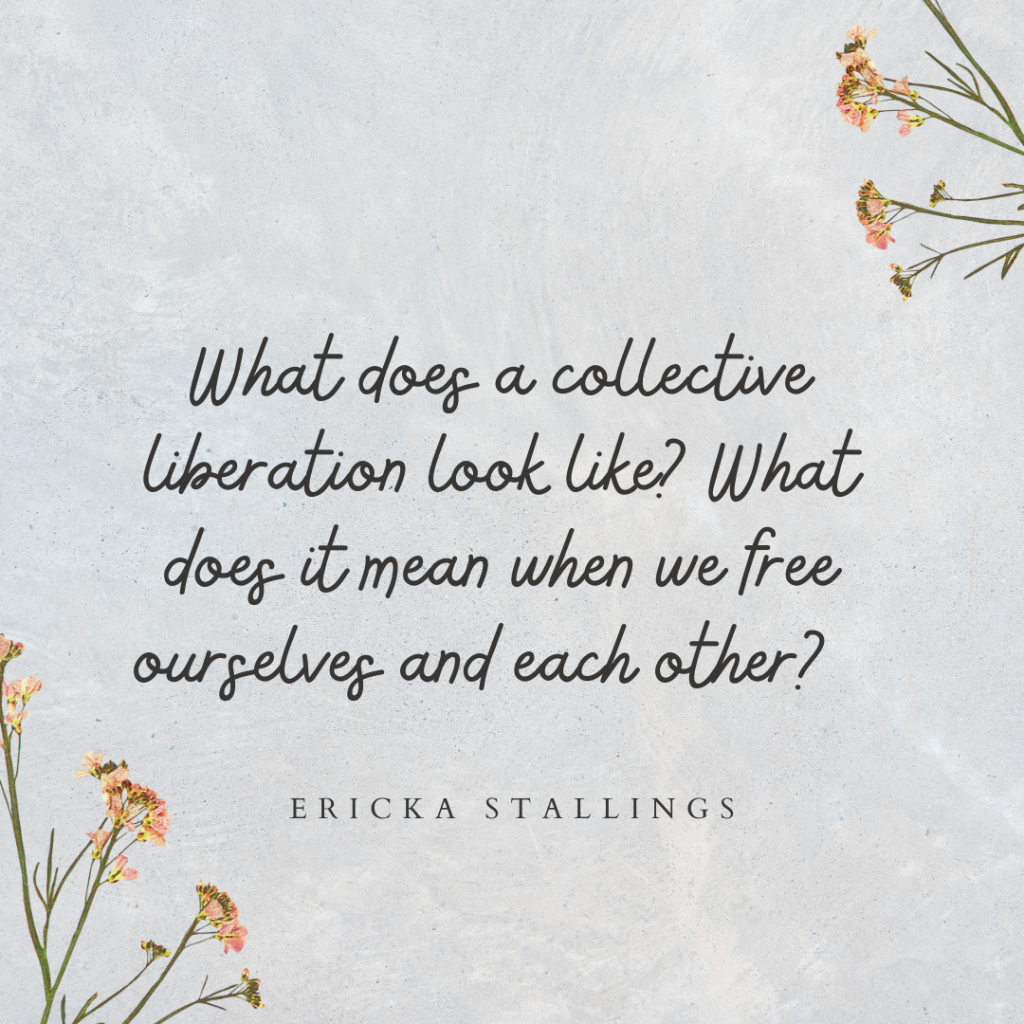
What’s a commitment you made to yourself during the pandemic that you intend to keep?
Nikki: I have made a commitment to root for me. It’s still a journey. I am surrounded by people like my sisters, my partner and my children, my collaborator Ericka, who think I'm so great. And I want to take on some of that energy and be like, I'm going to do it for me. And that's what has really emboldened me to be like, alright, look, we're doing liberatory work, we're gonna go there, because, you know, I was a lawyer—I know you can’t undo that kind of systems thinking overnight. I’ve had to work on this and believe in valuing this. And I've also known, because of my upbringing, that we can do better. So rooting for me is rooting for all folx entrenched in systems, for us to be a bit freer.
Ericka: One, I mean I have one commitment that I've made that is unexpected. And it's a group of women that I have coffee with, like virtual check ins with weekly.. We've been doing it since the beginning of the pandemic. The funny thing is we were not intimate friends before. We started this gathering to have regular conversations with agendas and learning goals and things like that, and they evolved or de-volved, depending on how you think about it, into very, very rich, deep emotional connections. I'm very proud and happy that I've continued to commit to these weekly check ins and also to those relationships.
Is there anything that you're like most excited for this year?
Nikki: We're doing some longer-term strategy work. In the next three to five years we will go bold with liberatory programming. Our lens for Network Weaver, for example, will be situated under the liberatory program side of the house. Everything we do will have to bring a kind of outside-the-system thinking which includes bringing in the perspectives and interests of people who are typically excluded from our systems. That said, I'm really excited to work with more people who are from other backgrounds, like refugees and trans folks, and queer folks, and people with disabilities. I have learned so much from people outside of our systems that I'm really excited for others to get that wisdom too.
Why LLC? Why Donate Now?
Ericka: One of my favorite quotes is: “if you give me a fish, you have fed me for a day. If you teach me to fish, you have fed me until the river is contaminated or the shoreline seized for development. But if you teach me to organize, then whatever the challenge, I can join together with my peers and we will fashion our own solution.”
With that in my mind, my hopes for the ongoing work of LLC and Network Weaver are in that vein; of prioritizing the people who are addressing issues in their communities and how folks in this space are supporting them. I'm hoping that the blog series we hope to launch soon will address how people are affirmatively and explicitly stepping back so that the people directly impacted come to the forefront. And I'm hoping these stories about the material, communal, and spiritual transformation that's happening help us see the real impact people are having on the communities they care about.

donate in the box above or click here

Ericka Stallings is the Co-Executive Director of the Leadership Learning Community (LLC) a learning network of people who run, fund and study leadership development. LLC challenges traditional thinking about leadership and supports the development of models that are more inclusive, networked and collective. Prior to LLC, Ericka was the Deputy Director for Capacity Building and Strategic Initiatives at the Association for Neighborhood and Housing Development (ANHD), supporting organizing and advocacy and leading ANHD’s community organizing capacity building work. Ericka also directed ANHD’s Center for Community Leadership (CCL) which provides comprehensive support for neighborhood-based organizing in New York City. At ANHD she formerly directed the Initiative for Neighborhood and Citywide Organizing (INCO), a program designed to strengthen community organizing in the local neighborhoods. Before working at ANHD she served as the Housing Advocacy Coordinator at the New York Immigration Coalition (NYIC), managing its Immigrant Housing Collaborative. In addition, Ericka co-coordinated the NYIC’s Immigrant Advocacy Fellowship Program, an initiative for emerging leaders in immigrant communities. She received her undergraduate degree from Smith College, studied International and Intercultural Communications at the University of Denver and Urban and Environmental Policy and Planning at Tufts University.

Nikki Dinh is the daughter of boat people refugees who instilled in her the importance of being in community. Though she grew up in a California county that was founded by the KKK, her family’s home was in an immigrant enclave. Her neighborhood taught her about resistance, resilience, joy and love.
Her lived experiences led her to a career in social justice and advocacy. As a legal aid attorney, she learned from and represented families in cases involving immigration, domestic violence, human trafficking, and elder abuse. Later, she joined the philanthropic sector where she learned from and invested in local leaders, networks and organizations throughout California. At Leadership Learning Community, she is excited that her work will continue to be guided by the belief that the people in communities we seek to serve are best positioned to identify and create solutions for their community.
About the Author

Sadia Hassan is a writer, organizational consultant and network weaver who enjoys using a human-centered approach to think through inclusive, equitable, and participatory processes for capacity building. She is especially adept at facilitating conversations around race, power, and sexual violence using storytelling practice as a means of community engagement and strategy building. She has received a Masters in Fine Arts, Poetry at the University of Mississippi and a Bachelor of Arts in African/African-American Studies from Dartmouth College. You can read more of her work at Longreads, American Academy of Poets, and The Boston Review. https://sadiahassan.com
feature photo by Lee 琴 on Unsplash
Networks: Resourcing Relationships and Interdependence for an Equitable Future Now
Networks for Equity and Systems Change
The events of the past year have made clear what many in and outside of philanthropy already knew: that equality in resource distribution is not equity, that much of what was thought impossible to change – telework policies, reporting requirements, fiduciary responsibilities – is suddenly possible, that what we need to shift big systems is interdependence (not codependence), and that what is needed for this shift to happen begins with strengthening our relationships with one another – as individuals, organizations, and communities.
Networks offer a structure for linking people and groups of people with a shared vision and shared values to build and strengthen the relationships necessary to shift big systems. By offering us opportunities to work together in ways that challenge us to build different understandings of and relationships to power and to each other, we are able to move in more interdependent and interconnected ways.
Many individuals and organizations – particularly those rooted in Black and Native communities, queer communities, and immigrant communities – have experience working in networks both rooted in and working to advance equity and justice yet are often not sufficiently resourced for this work. Other entities, including many funders, are bringing increased attention and resources to working in this way and yet these many groups that are poised to resource networks are still just learning about how to do so in ways that align with equity and manage disproportionate power dynamics.
In this moment of possibility for reimaging big systems to live our imagined future of love, dignity, and justice now, we are sharing some learning from a late-2019 gathering of nearly 70 network funders, practitioners, and participants about how network practitioners and some funders are nourishing and growing networks for equity and systems change.
An Experiential and Embodied Approach to Learning in Networks
The Networks for Equitable Systems Change gathering was co-created in partnership with Change Elemental, Uma Viswanathan and Matt Pierce at the Robert Wood Johnson Foundation, and a design team of network practitioners including Allen Kwabena Frimpong, Aisha Shillingford, Marissa Tirona, Robin Katcher, and Deborah Meehan. The group came together to engage with practices for building, resourcing, and sustaining networks. Together, we set out to learn about the following questions:
- How have funders and other organizations worked together in networks that promote equity and systems change?
- What are the barriers to resourcing networks for equitable systems change and what would it take to shift those barriers?
- What is the personal work and way of being needed to fully engage in networks, equity and systems change?
While desk research and interviews can be useful learning tools, we decided to take an experiential and embodied approach to learning about our questions. By bringing convening participants into the experience of network building in real time, we were able to create shared experiences that led to shared understanding about what it takes to build and sustain networks that can shift systems.
We can’t shift systems when we’re only touching one part of the elephant. We need spaces where the whole ecosystem comes together, bringing various perspectives that can give us a picture of the whole. Rather than host separate conversations with funders, intermediaries, and grassroots organizations, the gathering brought together many parts of network ecosystems to discuss how folks were experiencing power sharing within networks.
Below are some of the ways the experiential design of the convening – in addition to the deep expertise and knowledge that participants brought to bear – helped co-create our elephant and answer some initial questions about networks…
We Challenged Dominant Ways of Building Alignment through Rigid Frameworks and Definitions and Instead Reached Shared Understanding with Storytelling
Through experiential learning and storytelling, convening participants aligned on shared definitions for what we mean by a network as well as successful practices for building, sustaining, and resourcing networks.
With our design team, we co-created a learning network that engaged people with different access to resources, different kinds of power, and different experiences and roles in networks. We were concerned about bringing so many different folks together to talk about networks when we all were coming in with these different experiences, definitions, etc. We faced the same pressure points that networks face: how do we distribute resources across this group and compensate people for their time and labor? How can we facilitate more open discussions with transparency and deeper sharing among groups who have different priorities, expertise in networks, roles in the movement ecosystem, and kinds of power? Where do we need alignment and shared definitions and where should we hold generative tensions and conflict?
Initially, we considered aligning the group through some shared definitions and research in networks before coming together, but that process seemed time consuming and didn’t fully honor the wisdom in participants’ different perspectives and experiences. Instead of creating written definitions and a compilation of research to align participants on a common framework, we had attendees prepare spark stories – a short story that communicated their experiences and challenges in a network when working across funders, individuals, grassroots organizations, and other entities. Participants shared stories in small groups and each group created an image to show similarities and differences in themes across stories. The storytelling accelerated shared understanding in small groups and highlighted the multiple perspectives in how participants understand and experience networks.
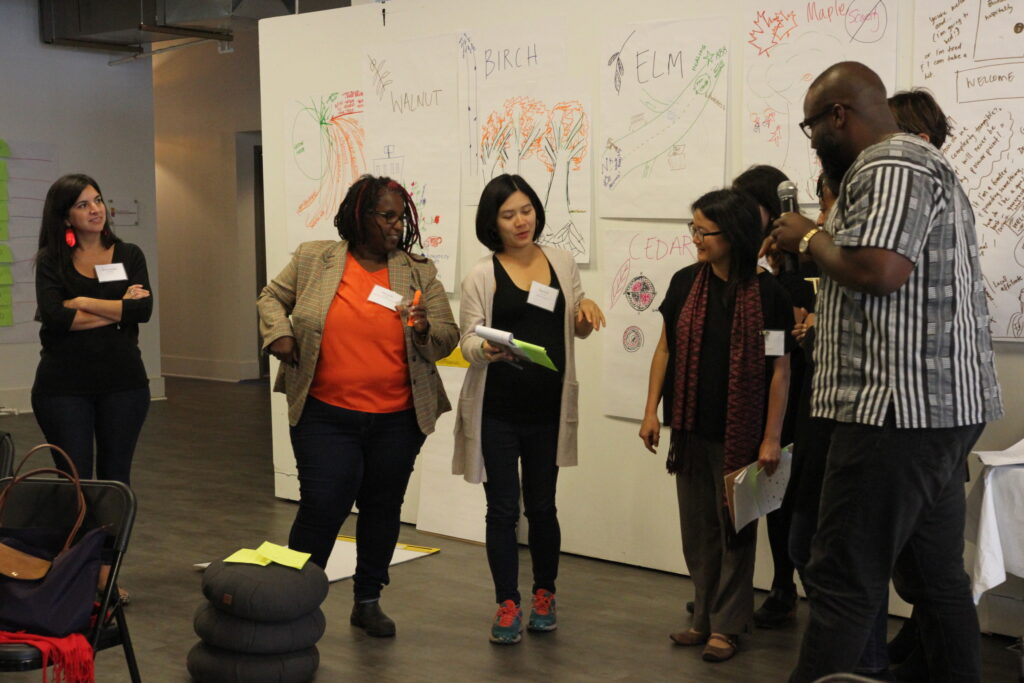
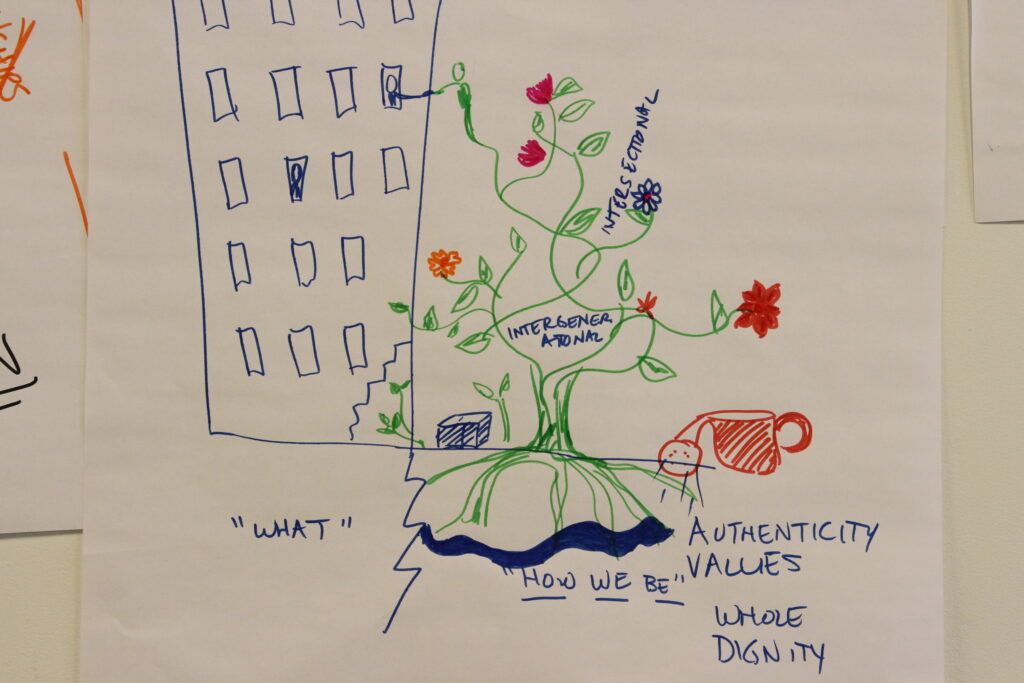
Many participants also shared their spark stories in video conversations. In this video, design team member Allen Kwabena Frimpong and Rachel O’Leary Carmona from AdAstra Consulting share their own definition of a network.
We Used Art Making to Illuminate Power Differences and Start Deeper Conversations about Power Sharing in Networks
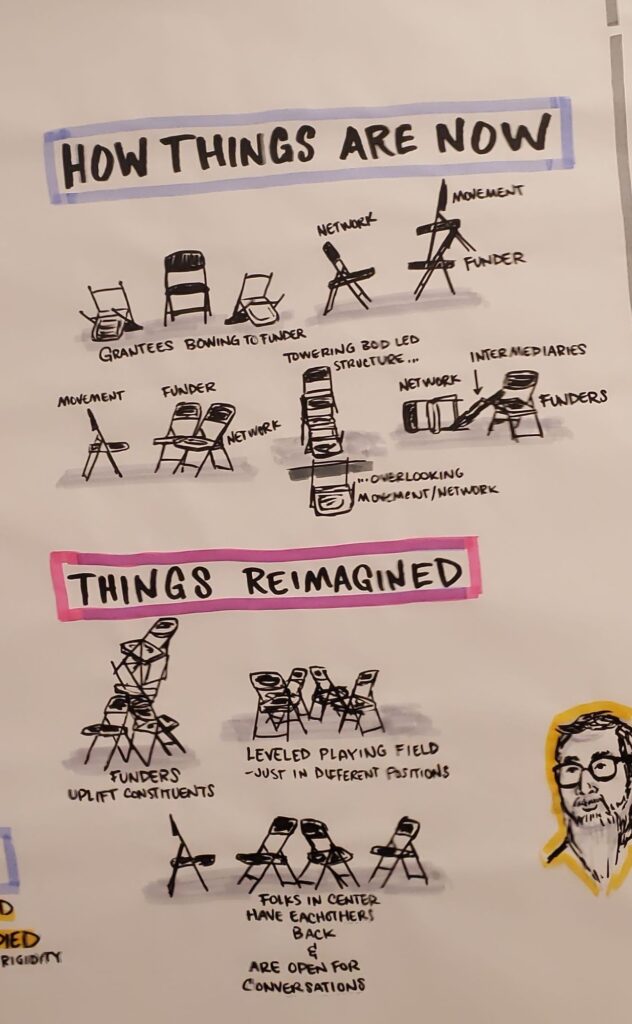
Navigating power differentials – including naming and managing them – was a key element in supporting shared learning in this diverse space and also mirrored the ways in which engaging with power can create generative conflict that supports network building or exacerbates unnamed tensions that derail it.
At one point before the convening, some funders were feeling nervous about their power relative to other groups and considered having a separate space. We ultimately decided against that and instead brought funders together to discuss how we might acknowledge and visibilize power differentials (rather than obscure them). We also saw this as a way for funders to build practices for being in spaces where they have more power related to resourcing (such as in a network).
In an exercise from Theater of the Oppressed participants could make visible the power differences between funders that financially resource networks and other network participants. Participants positioned chairs differently based on their vantage point and each new sculpture was in dialogue with the previous one, creating space for different perspectives in support and in tension with each other.
In this spark story, Sage Crump, Cultural Strategist, shares her experience with power as an intermediary navigating the relationships between networked organizations and funders.
Starting with this creative exercise created a bridge to harder conversations about the barriers to equity in resourcing networks such as how money is distributed across network participants, inappropriate use of power, or challenges that come up when there is misalignment between the equity values of a network and the culture of a funding institution.
Convening participants Eugenia Lee of Solidaire and Rajiv Khanna from Thousand Currents discuss what it takes for people inside large funding institutions to align foundation culture with equity and other values needed to better support networks.
We Made Space for New Conversations about Resource Sharing and New Processes for Resource Distribution
Equity should inform how we resource people to be and learn together across power, identity, and roles and then to do together (in networks). Yet external systems, norms, and habits can often inhibit us from living out our values. One example of this is the radical redistribution of resources in neworks, which requires leaning into new practices for how we work together and support each other given our proximity to power and resources.
To financially support people’s attendance at the gathering and their contributions to the space, we created an equity fund. The set-up and distribution of the convening’s equity fund provided the group with an opportunity to lean into these new ways of being. It required vulnerability from participants in asking for what we need and for those holding financial systems to figure out creative ways of reducing the administrative burden on participants, for example by offering stipends rather than reimbursing receipts.
To guide us in these new (to some) ways of being and doing, we created a set of fund principles. Adapted from Leadership Learning Community, the principles included:
- People can ask for what they want and need
- Adopt an abundance mindset (we can always find a way to get more)
- Function with trust, no questions asked
- Give people examples of what they might use funds for (e.g., lodging, childcare, funds to cover a missed day of work for hourly professionals, etc.)
At first, people asked for very little. After more enthusiastic nudges and encouragement to lean into the principles and the discomfort of asking (for example, by looping back to confirm, clarifying our equity principles, and sharing more examples of what people have asked for) more participants felt comfortable asking for what was truly needed.
The initial hesitancy from participants prompted us to think more about who feels entitled to ask for equity funds and how that may relate to our individual sense of worth (eg. how much do I really need this?) and relationship to the collective (e.g., how much might others need relative to me?).
During the convening, we shared what we learned from managing our equity fund in this meme-filled presentation, including how we pushed for a “no receipts” policy, which was challenging to navigate from a compliance perspective but saved a great deal of administrative time.
In this spark story, convening participants Elissa Sloan Perry from Change Elemental and Alexis Flanagan from the Resonance Network share another example of resource distribution within a network, including the vulnerability and trust needed to talk openly about personal wealth as a way towards more equitable resource distribution.
While some of the experiential learnings from the convening are captured above, network practitioners and funders also brought together learnings from past experiences in leading with equity and navigating power differentials within networks including how funders operate in networks; the different forms and shapes networks might take; capacity, impact, and infrastructure needs in networks; and ways of being needed to build, resource, and support networks.
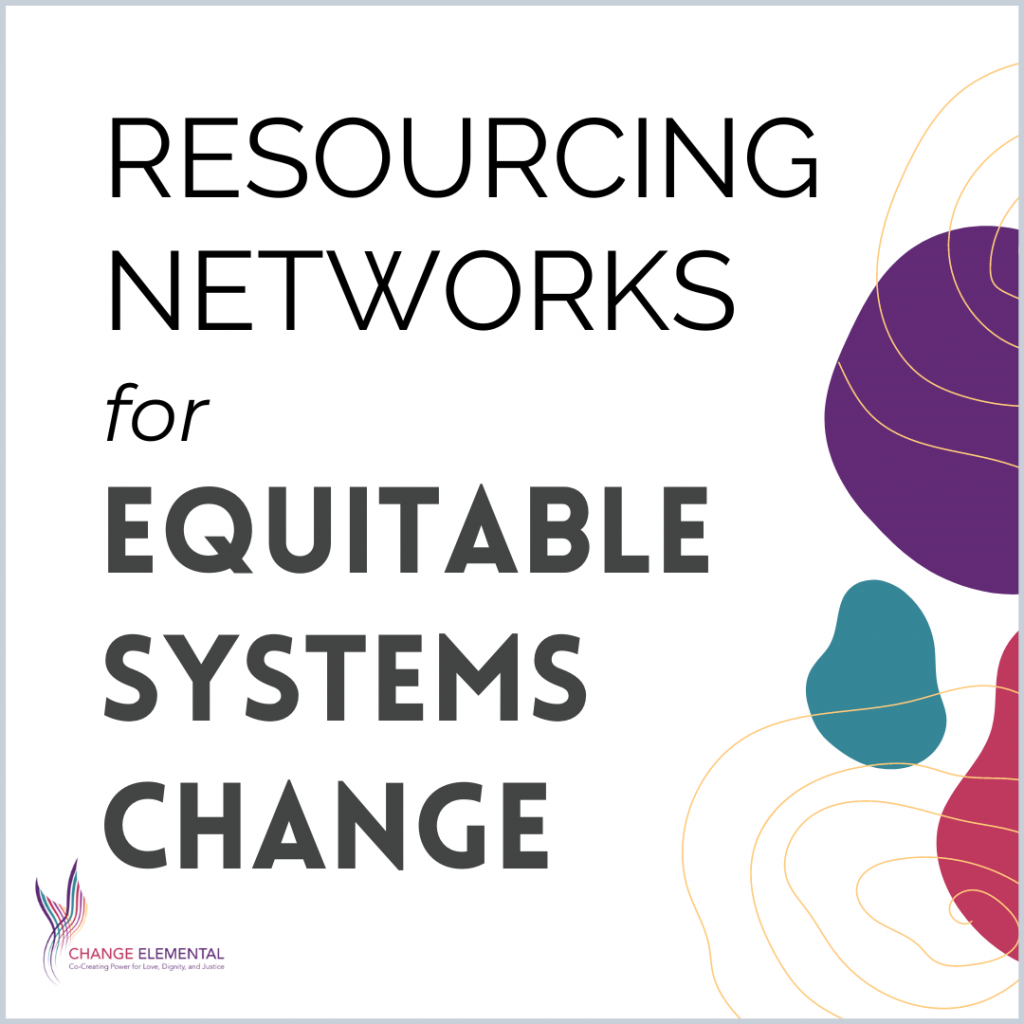
To dig into more stories and insights as well as many other resources about networks, see the report, “Resourcing Networks for Equitable Systems Change: Perspectives from Funders, Intermediaries, Individuals and Organizations on How We Fund and Support Networks for Equity.”
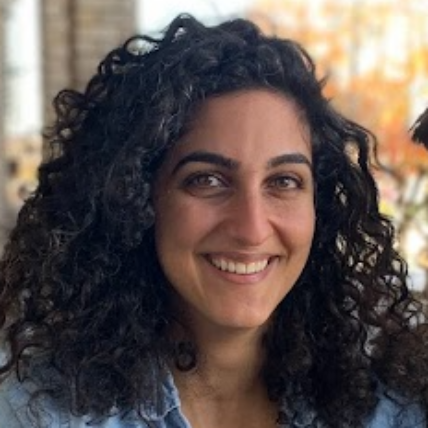
Natalie Bamdad (she/her/hers), joined Change Elemental in 2017. She is a queer and first-gen Arab-Iranian Jew, whose people are from Basra and Tehran. She is a DC-based facilitator and rabble-rouser working to strengthen leadership, organizations, and movement networks working towards racial equity and liberation of people and planet.
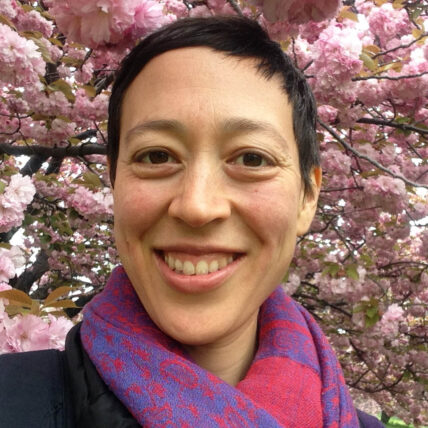
Alison Lin (she/her/hers) supports leaders in authentic collaborations to transform people and systems toward love, dignity, and justice. With over 20 years of leadership experience, she draws from work in race equity, complex systems change, organizational development, learning through experimentation and life with a focus on issues affecting LGBTQ and BIPOC communities. She joined Change Elemental in 2017.
Video recording, editing, and photos by Breathe Media Group
Graphic recordings by Brandon Black
Cover photo by Brian Stout
Originally published at Change Elemental

Network Weaver is dedicated to offering free content to all – in support of equity, justice and transformation for all.
We appreciate your support!
donate in the box above or click here
